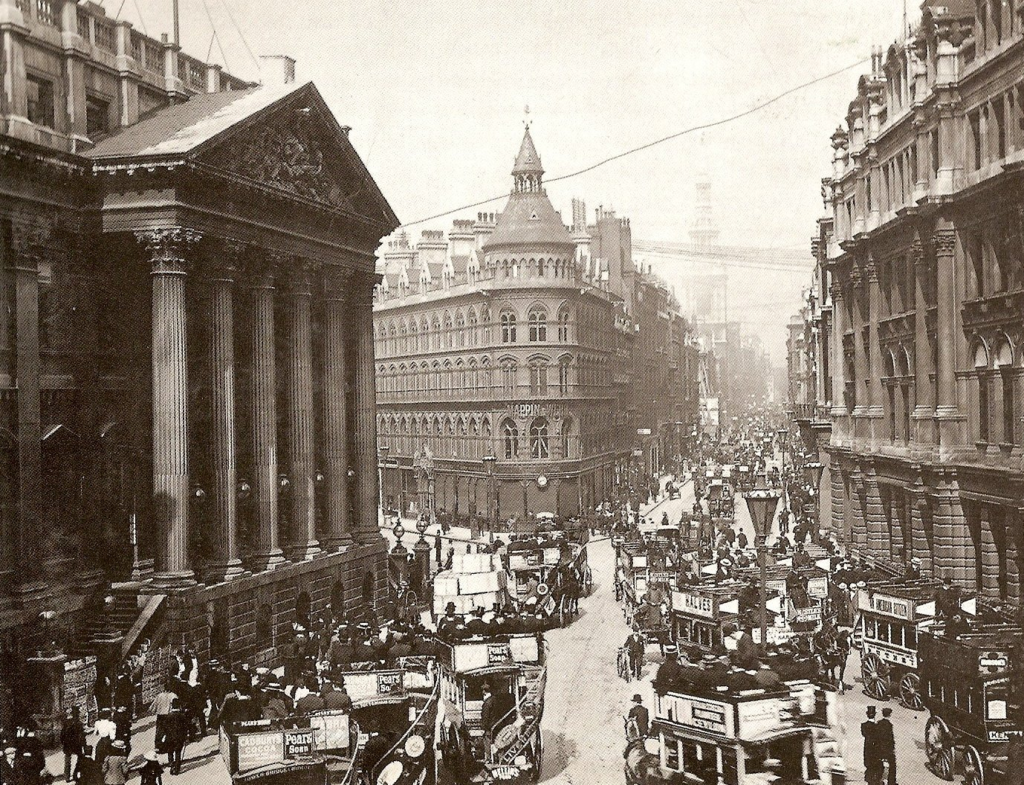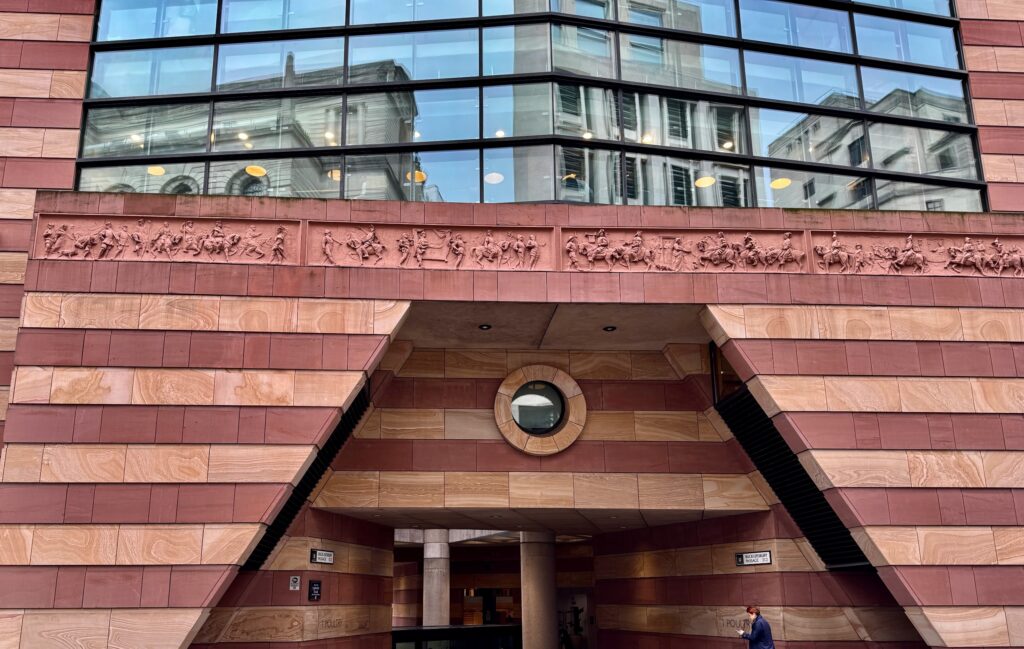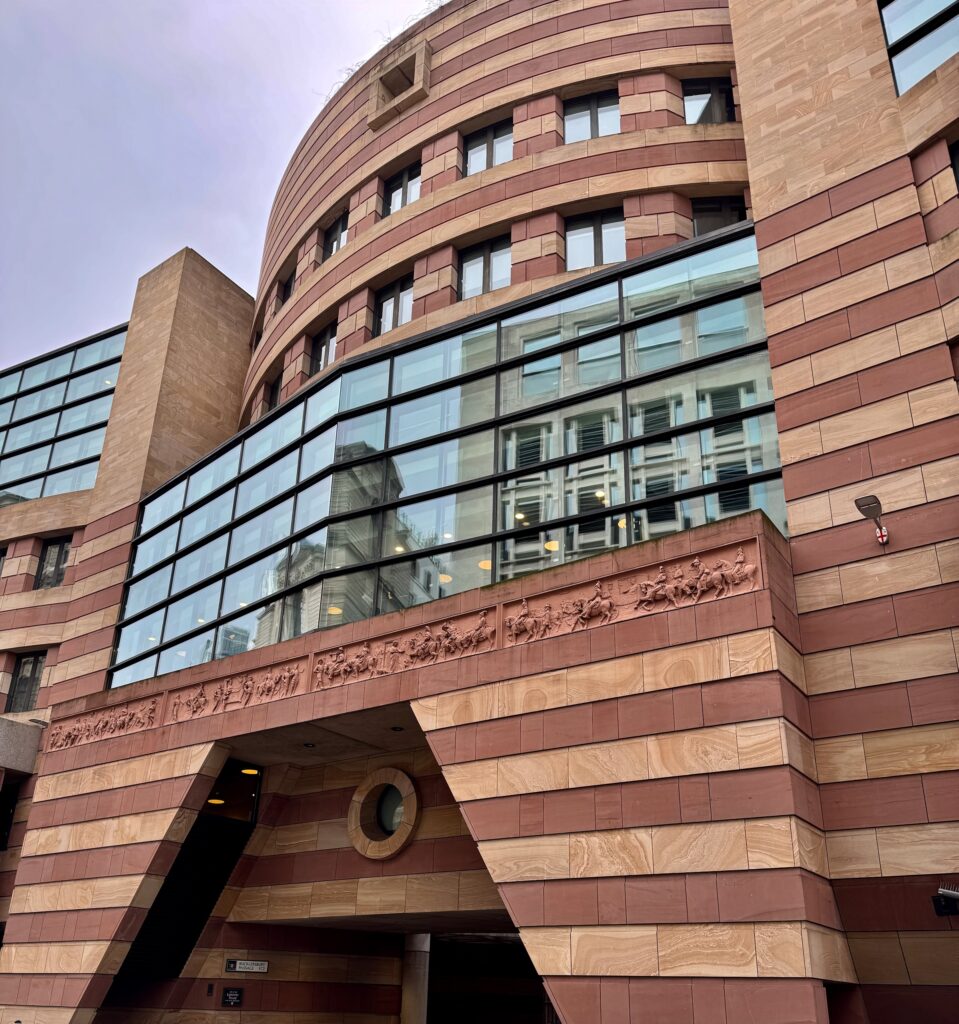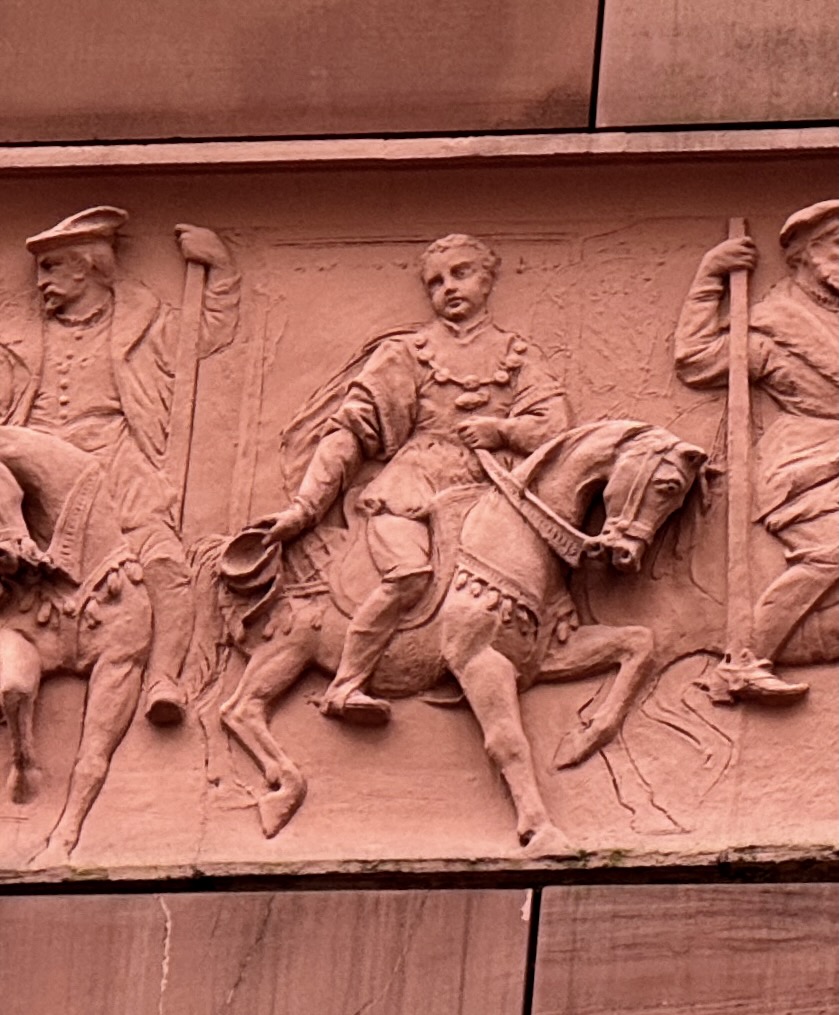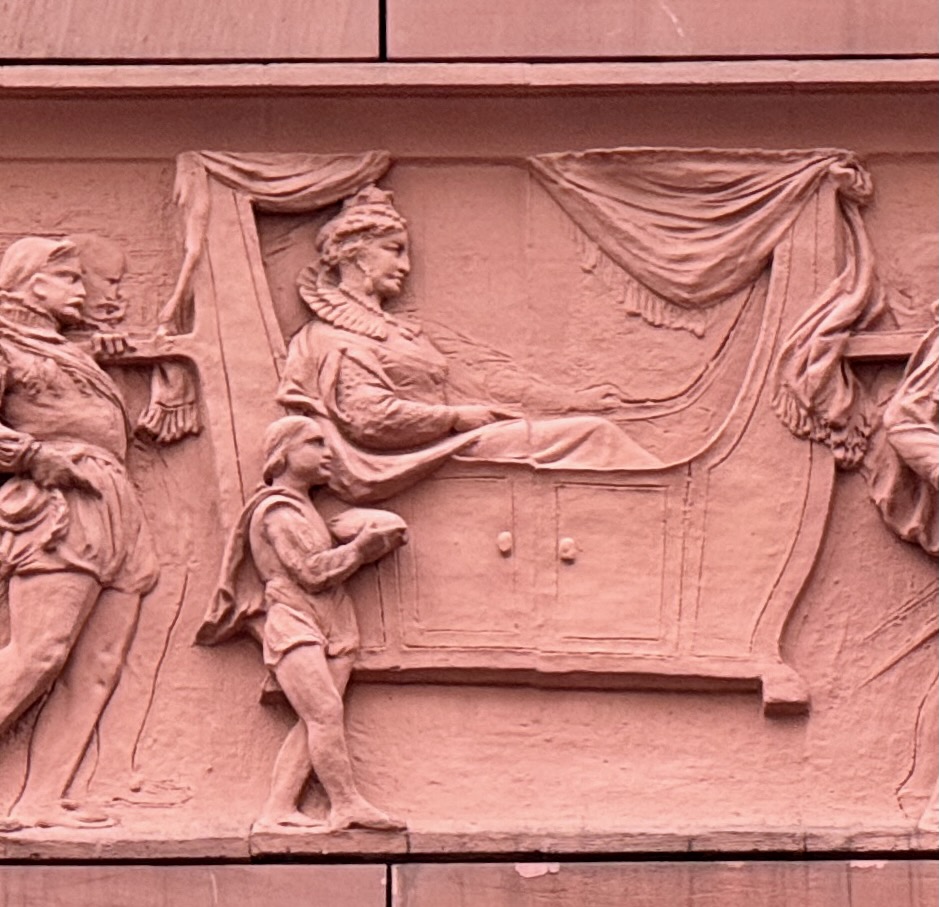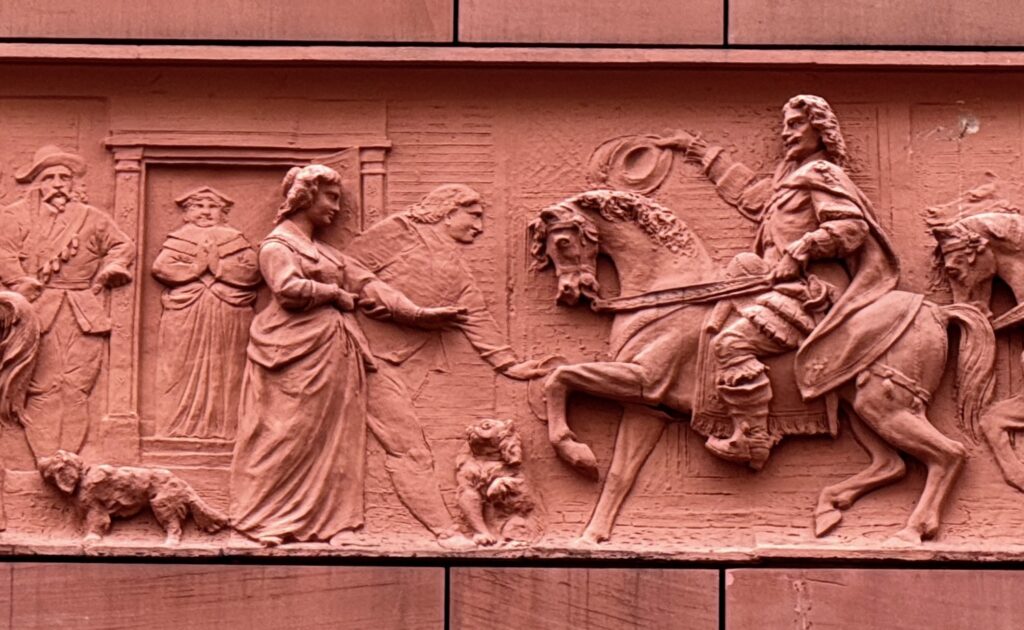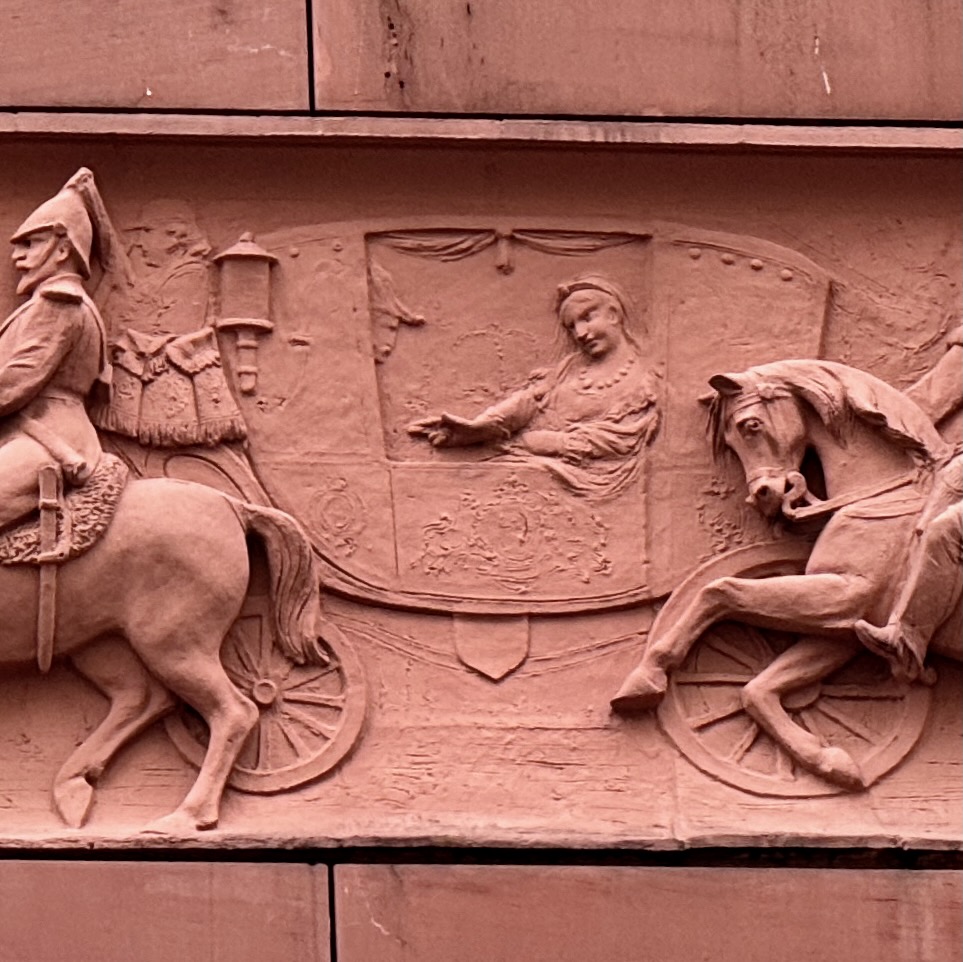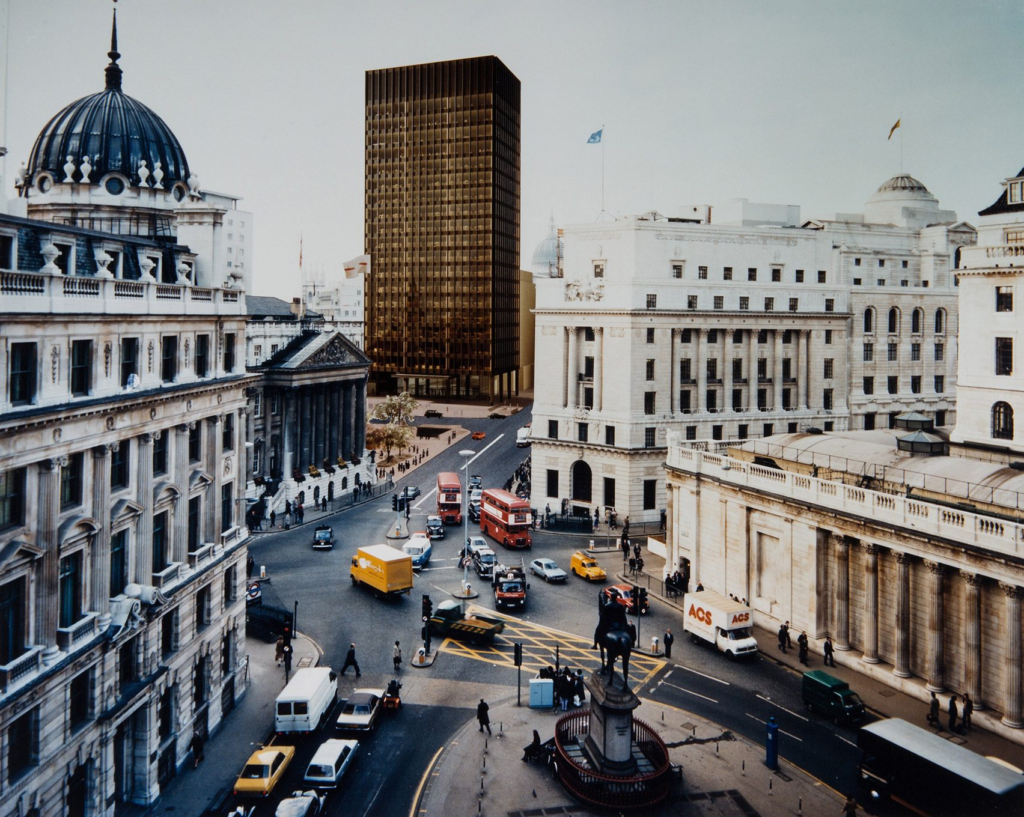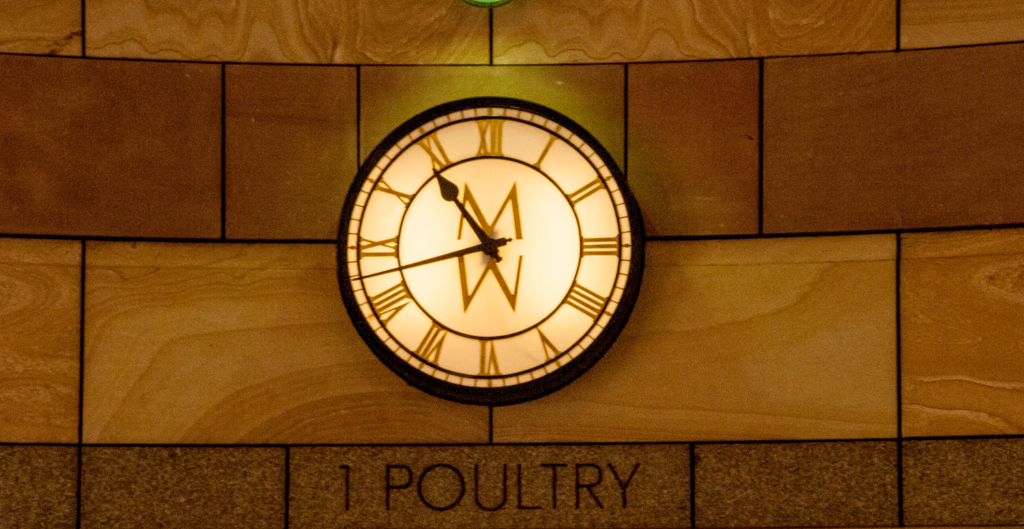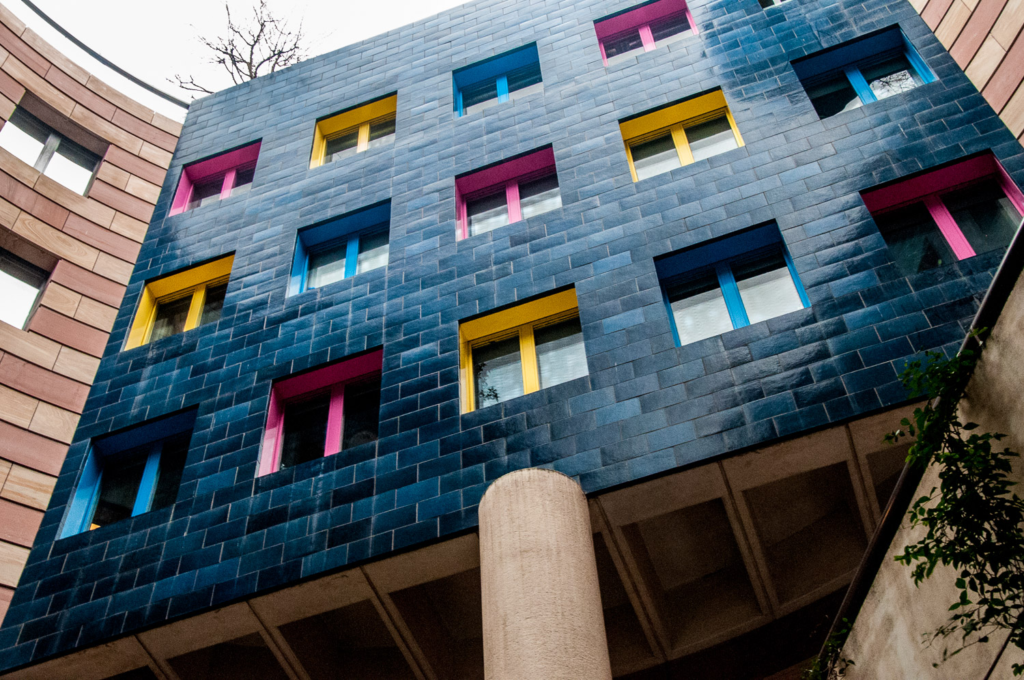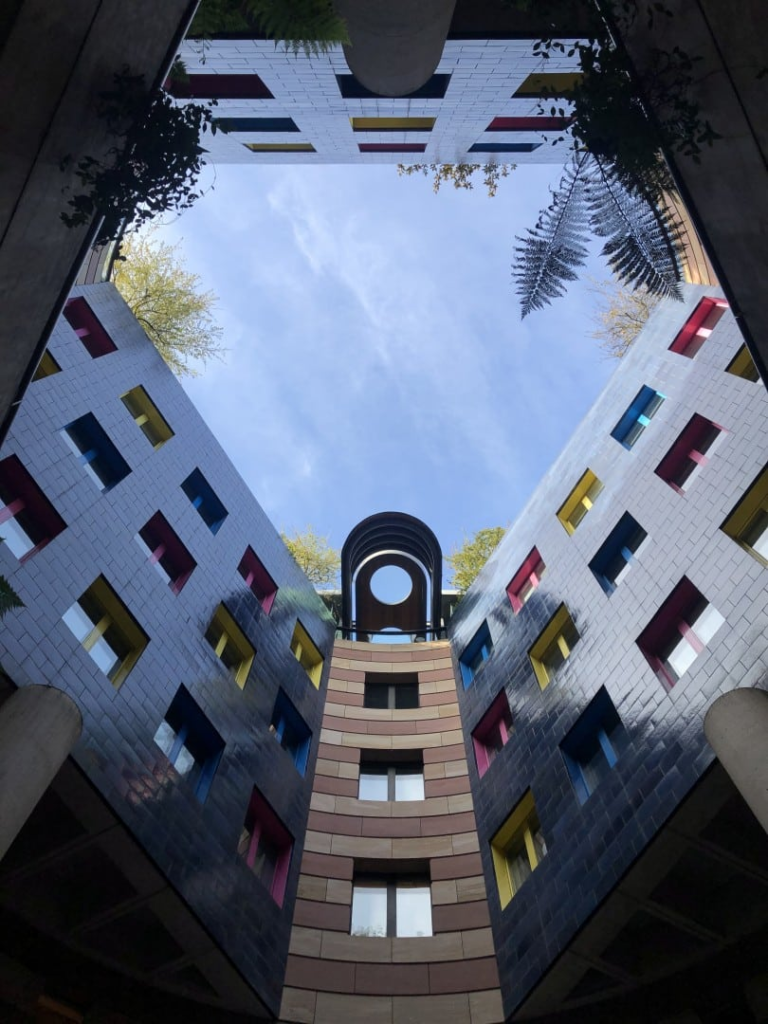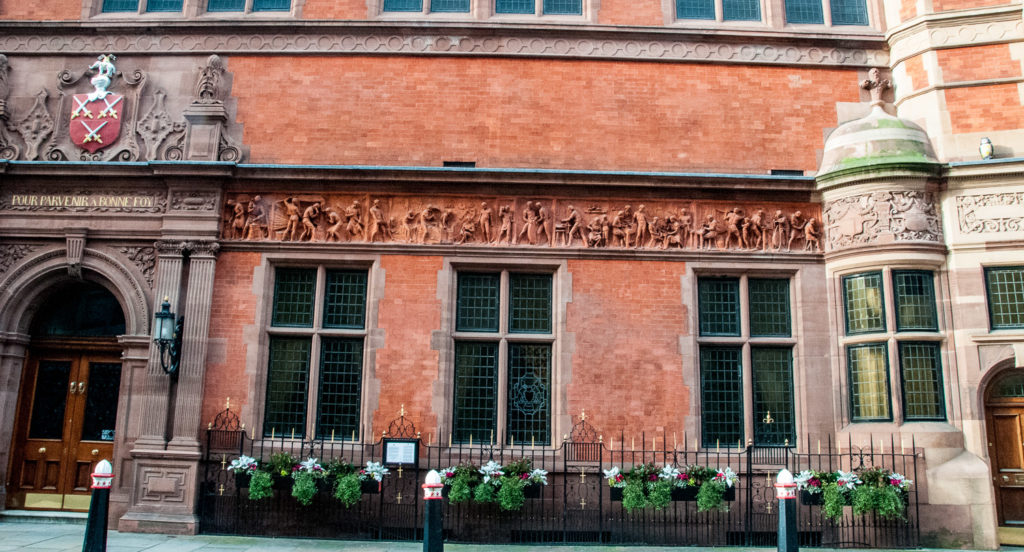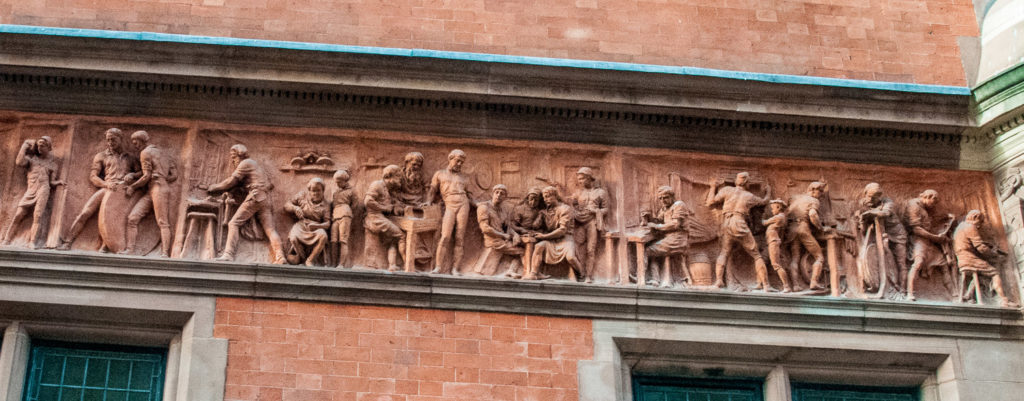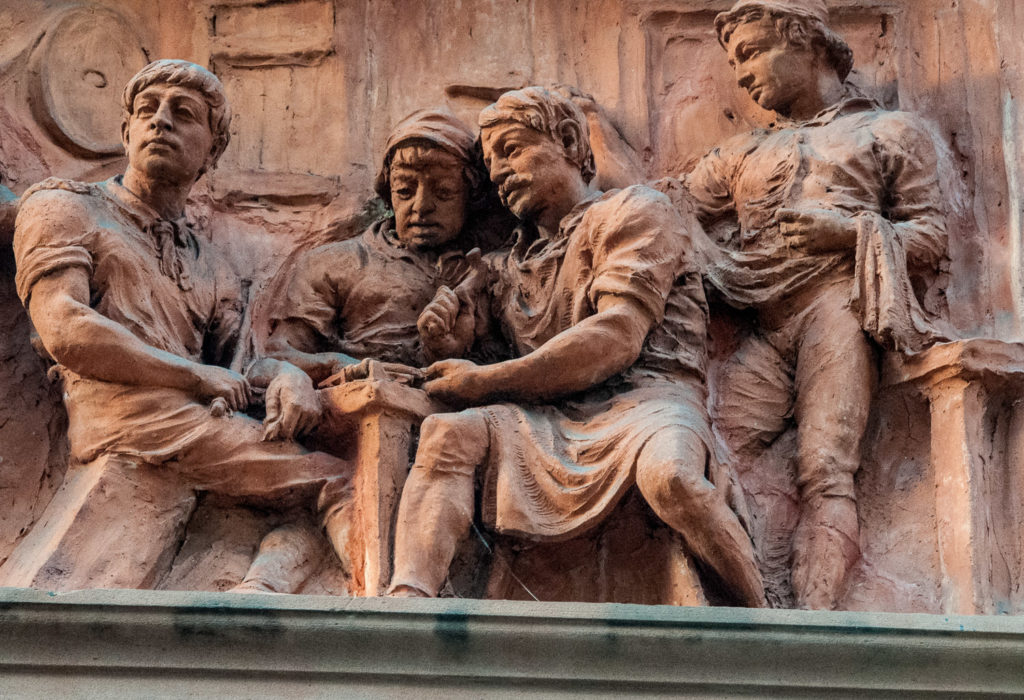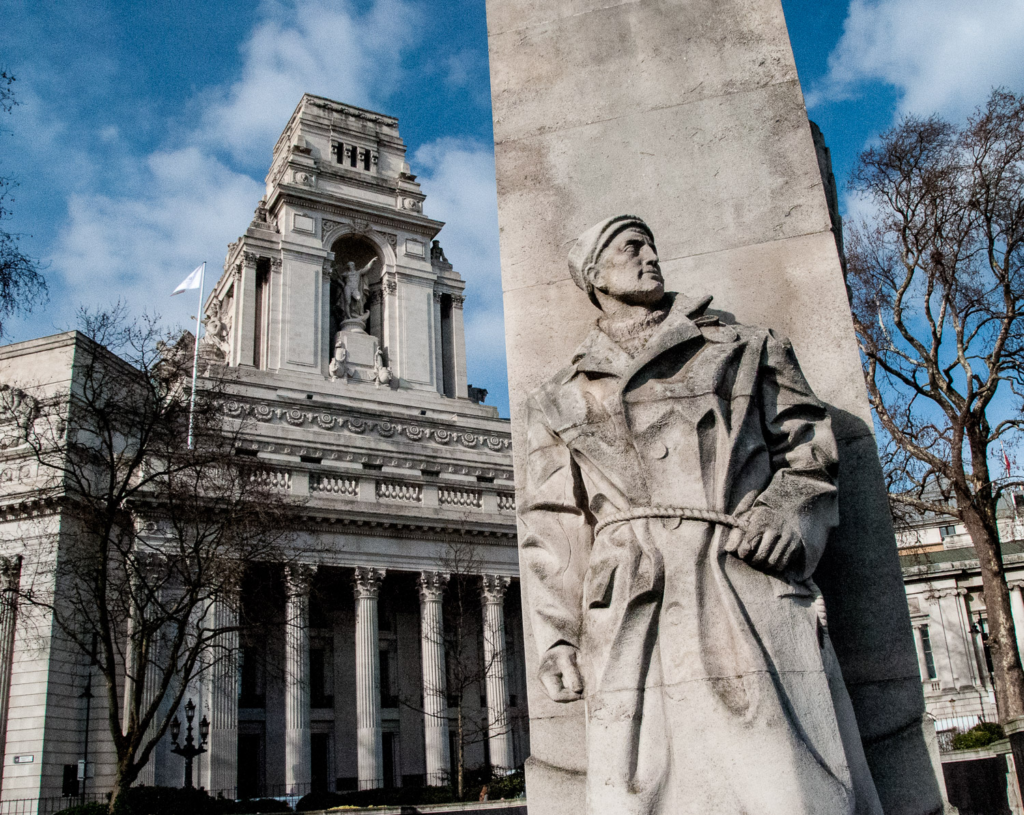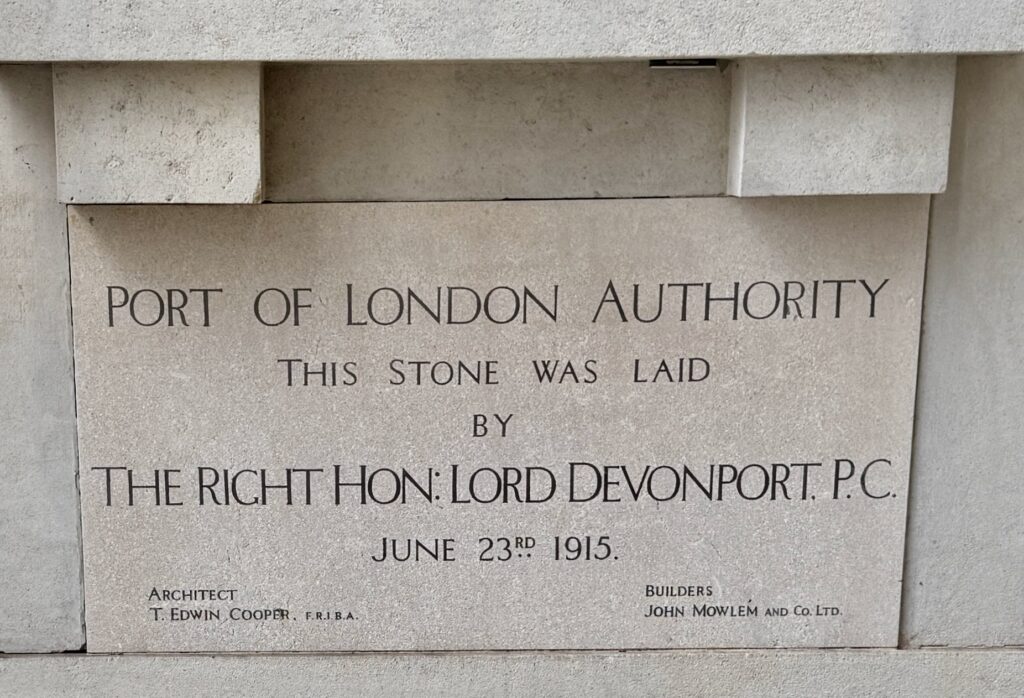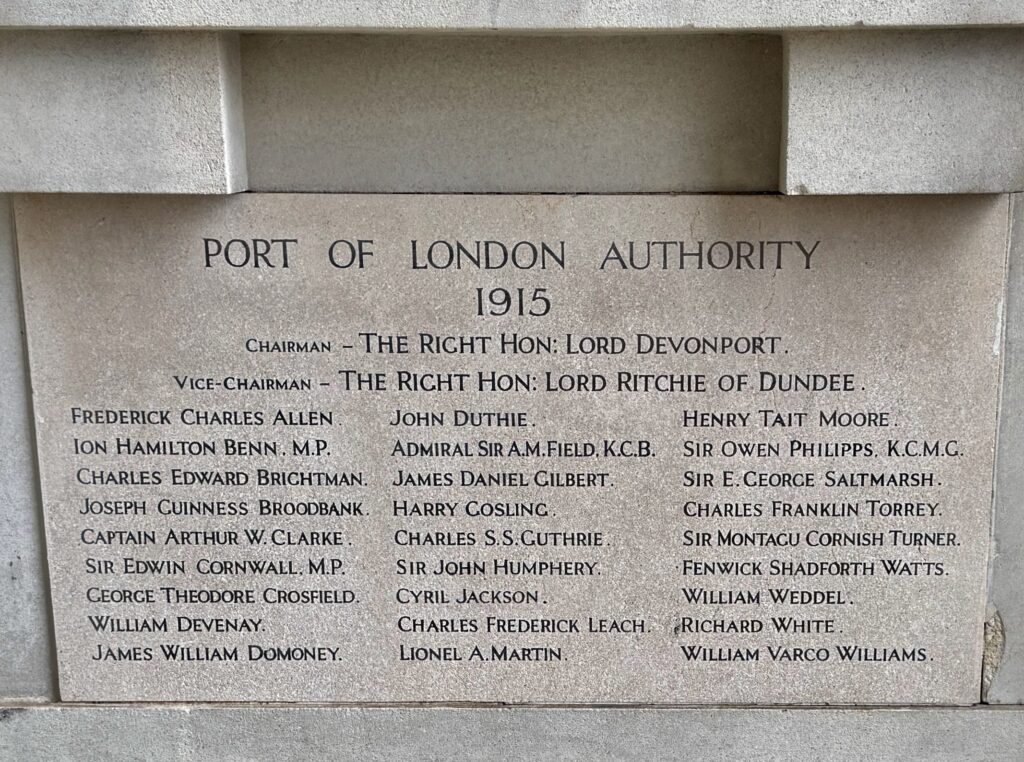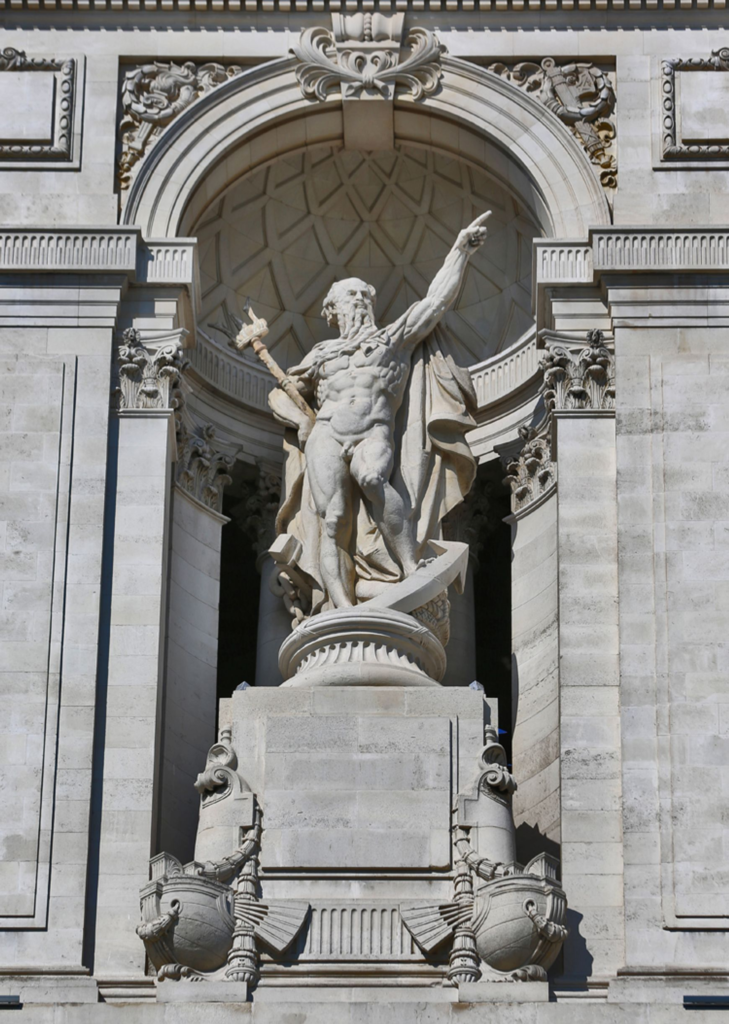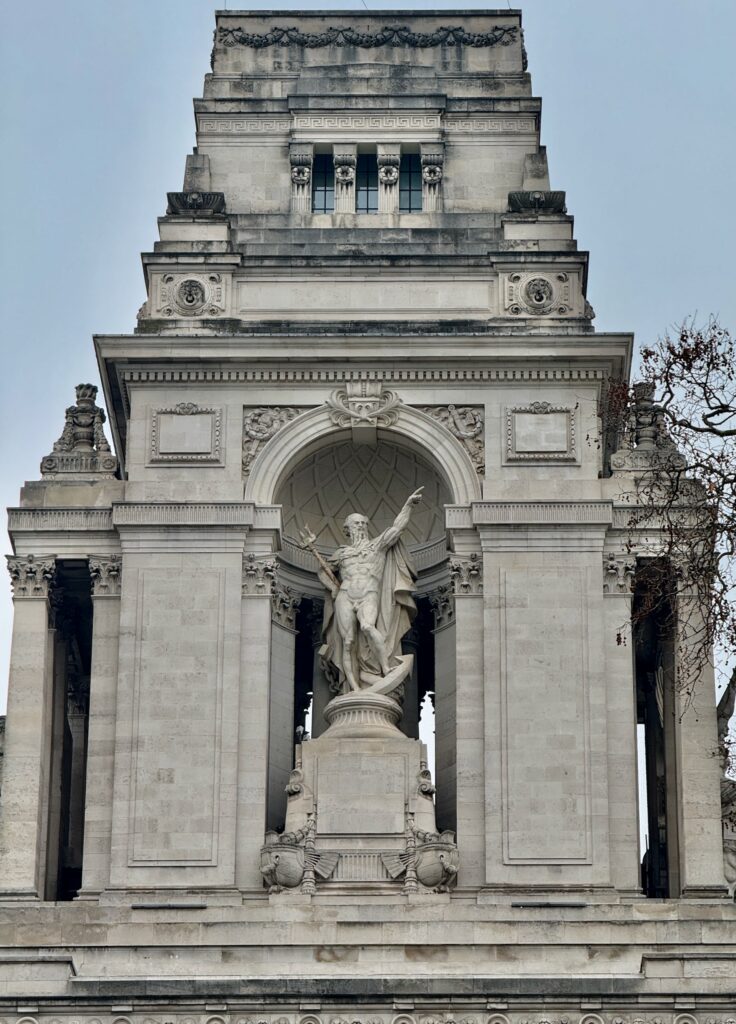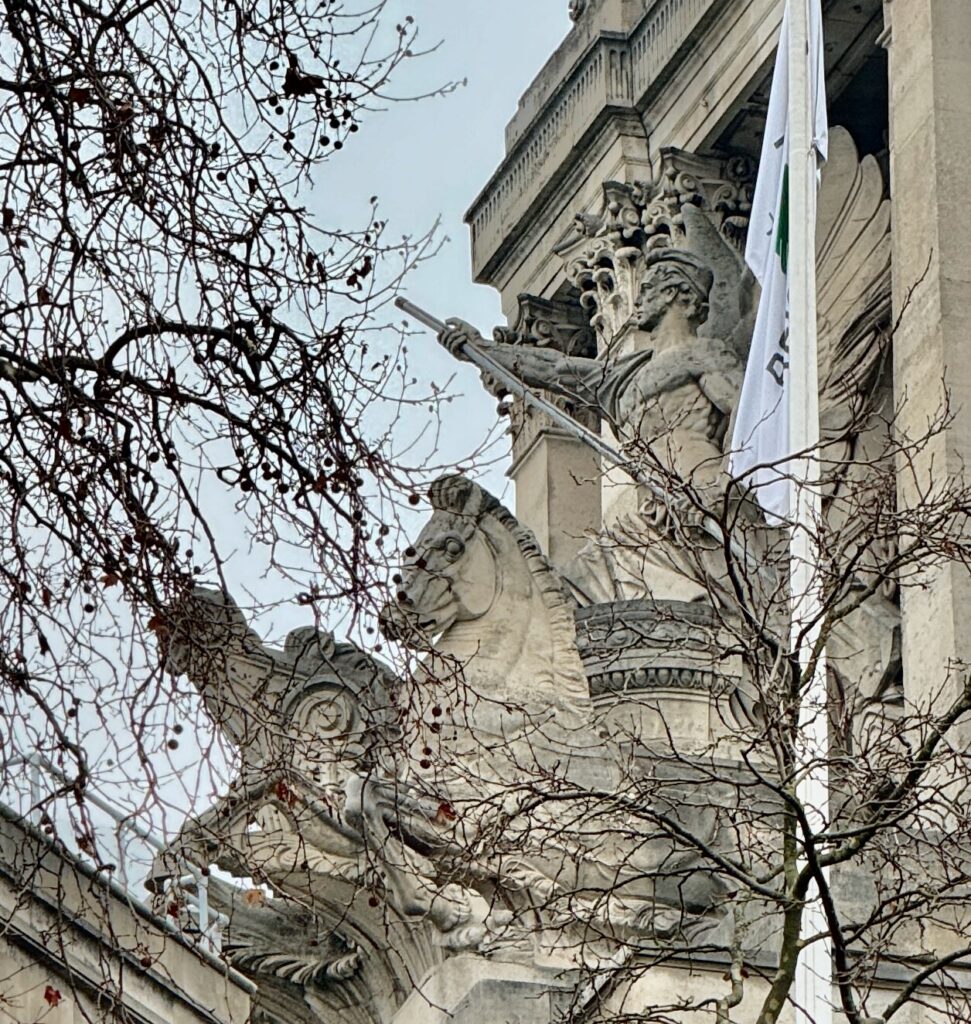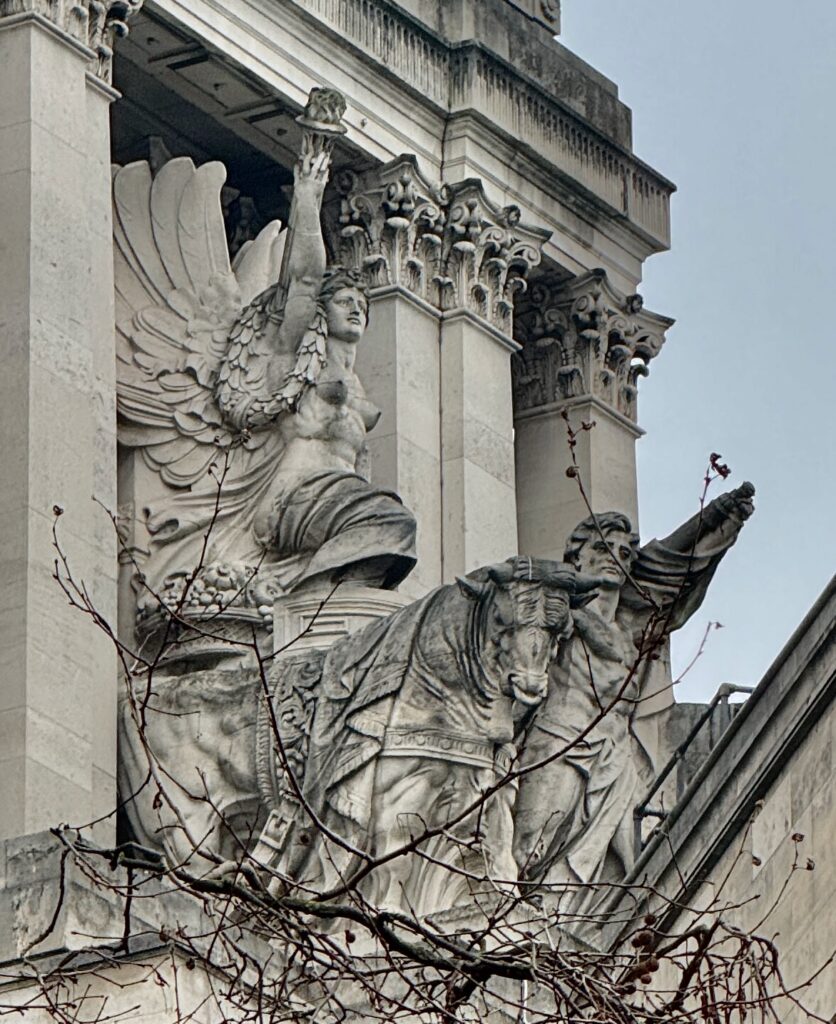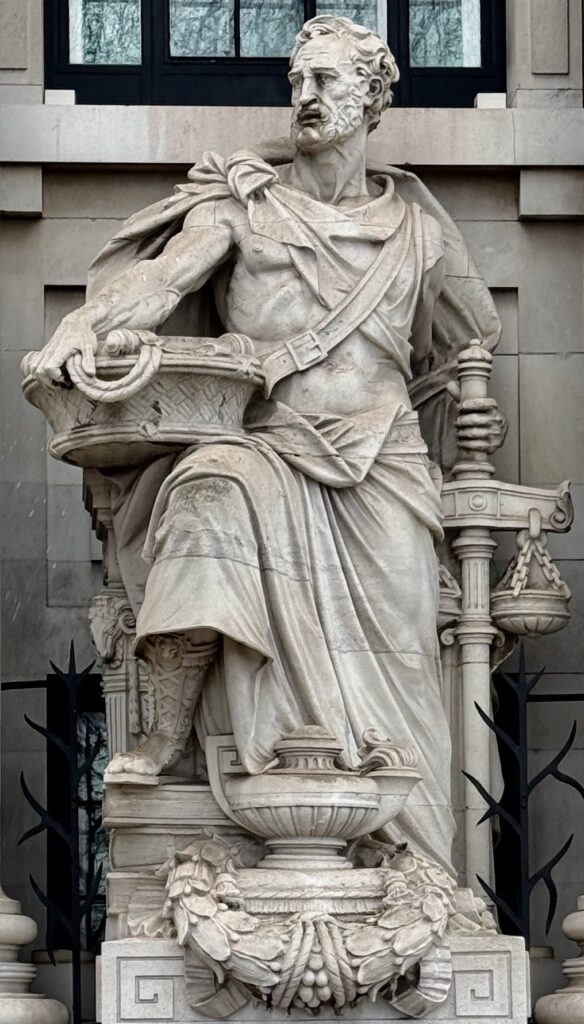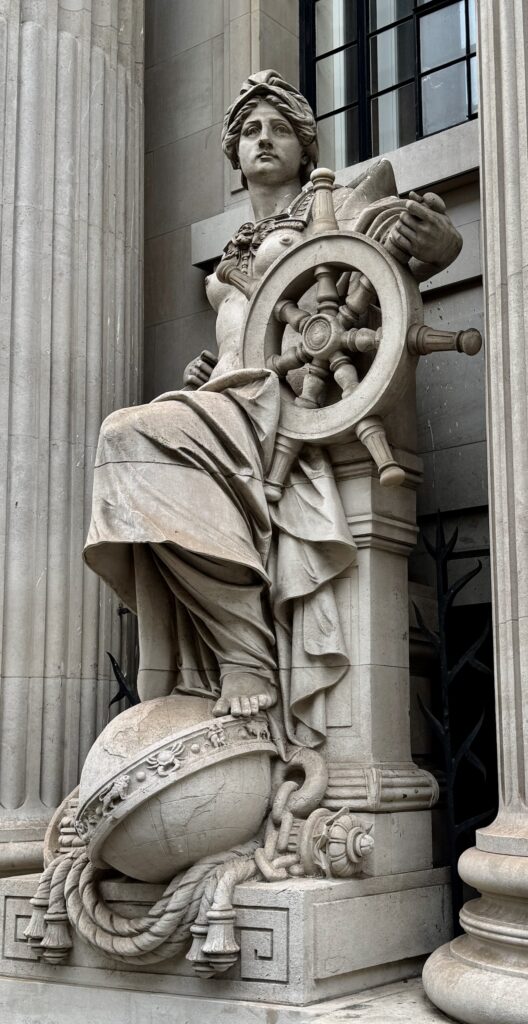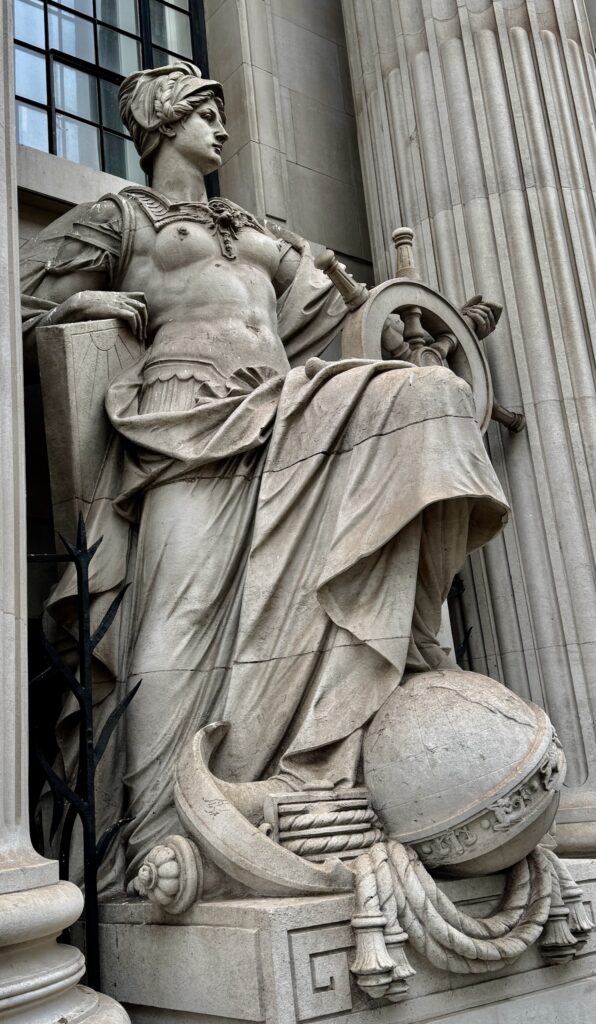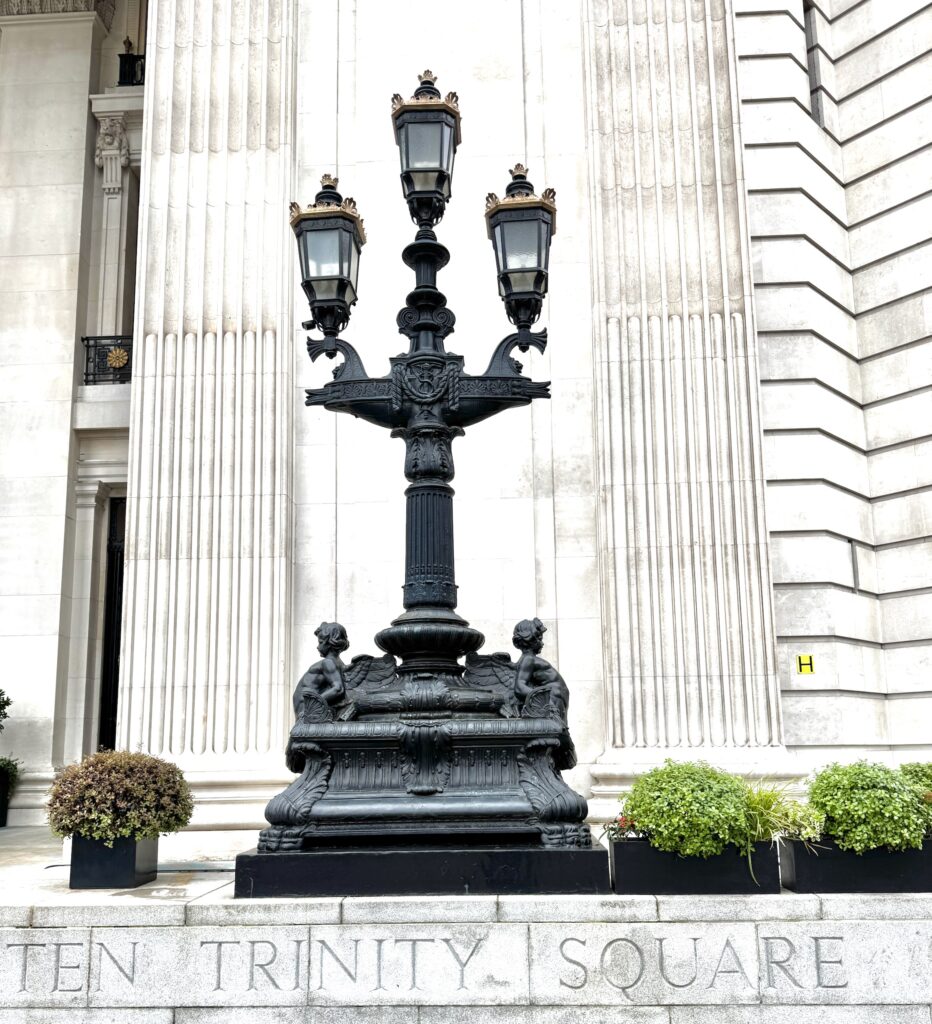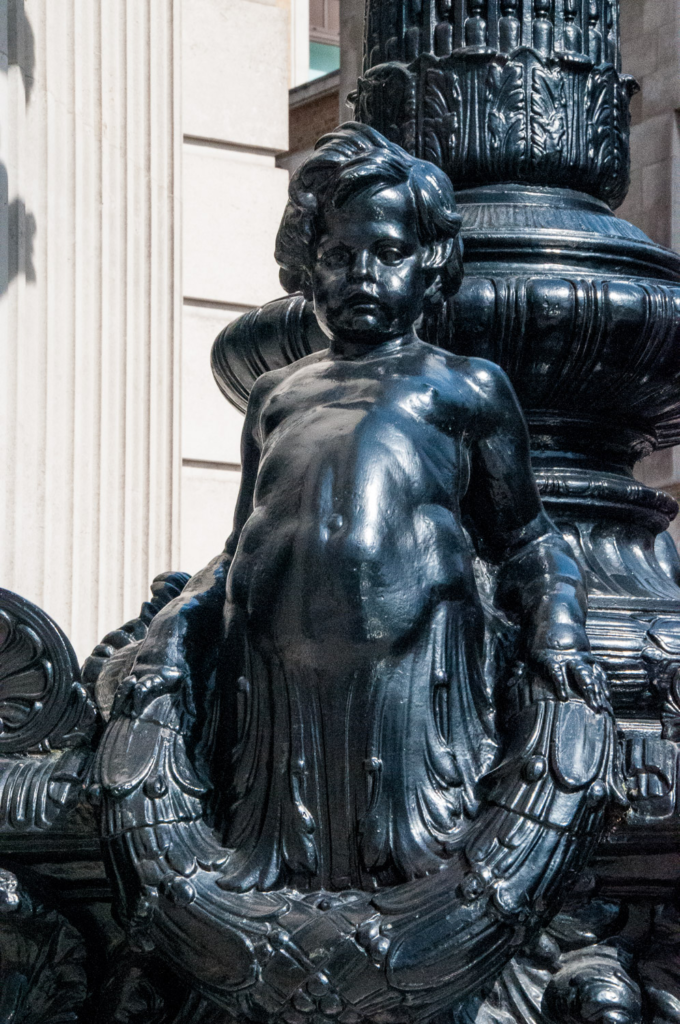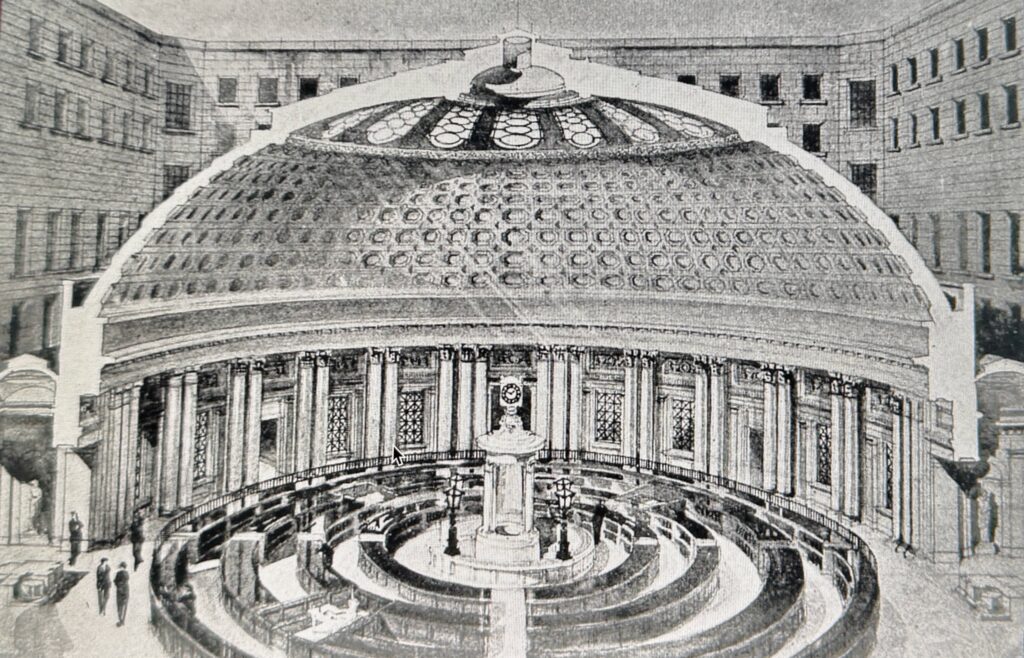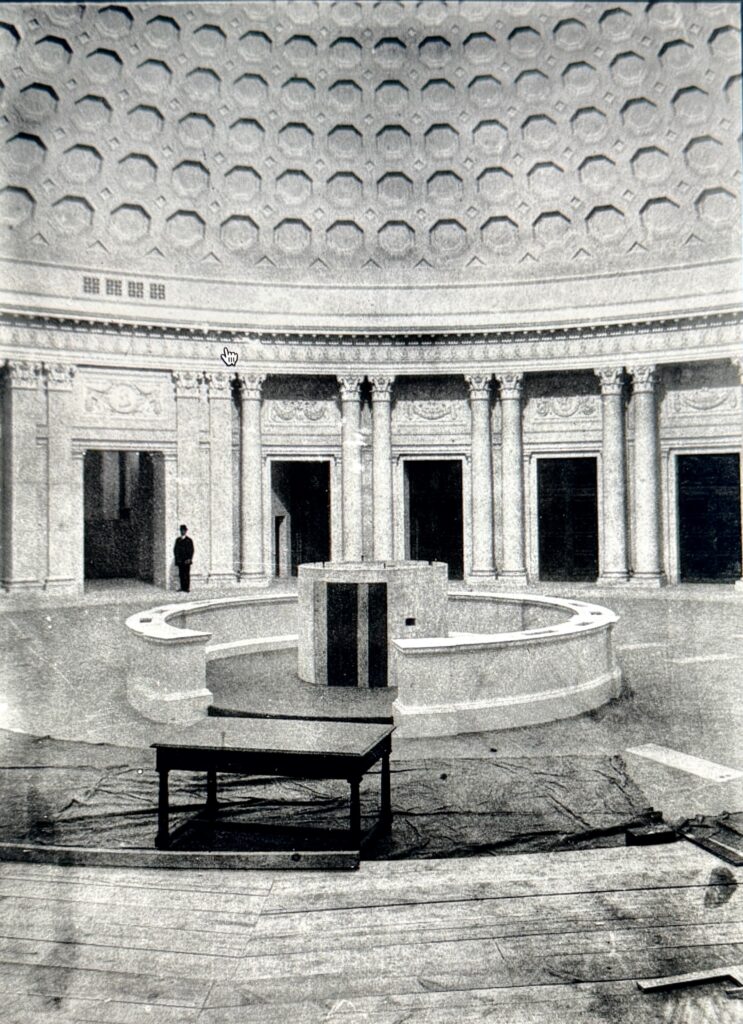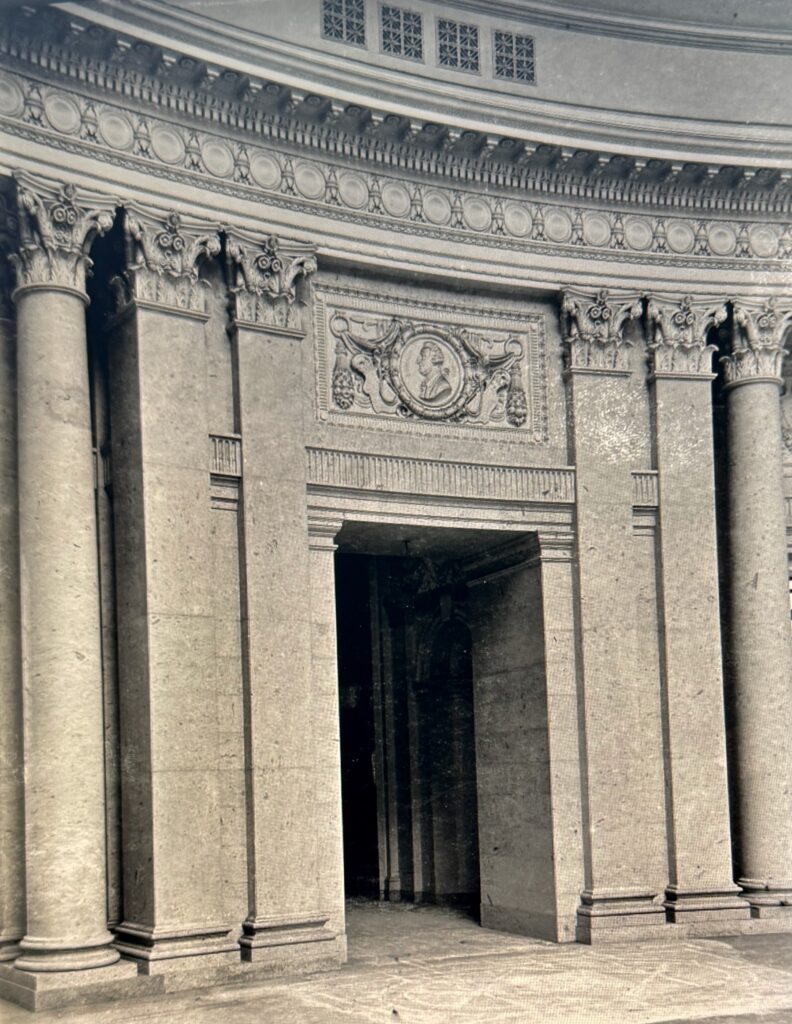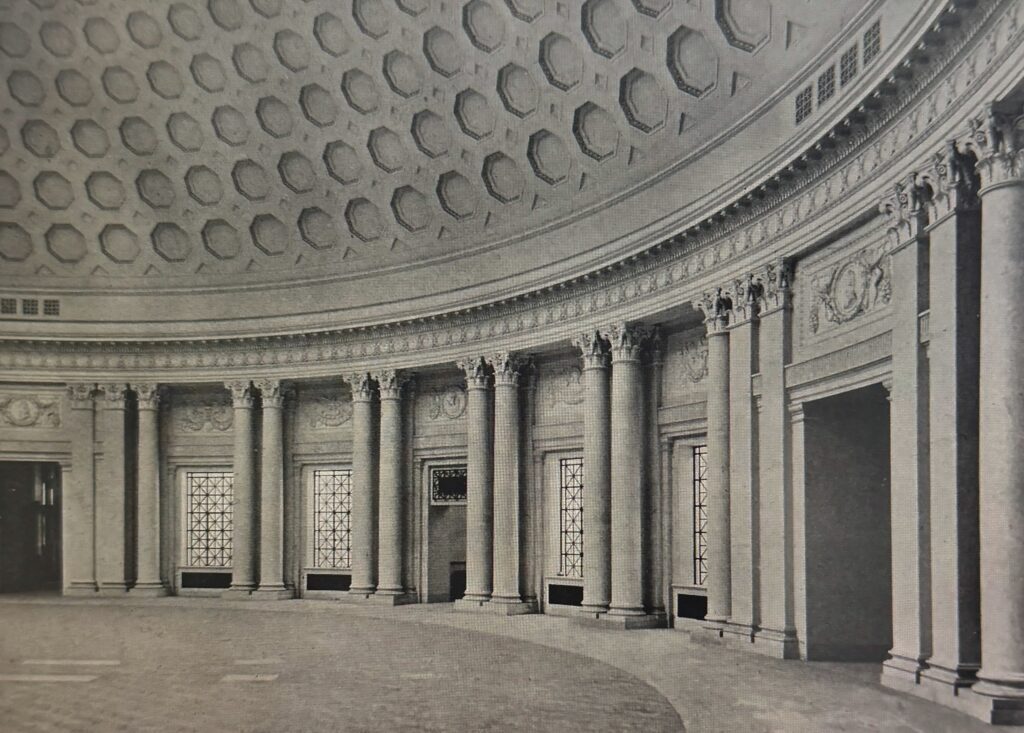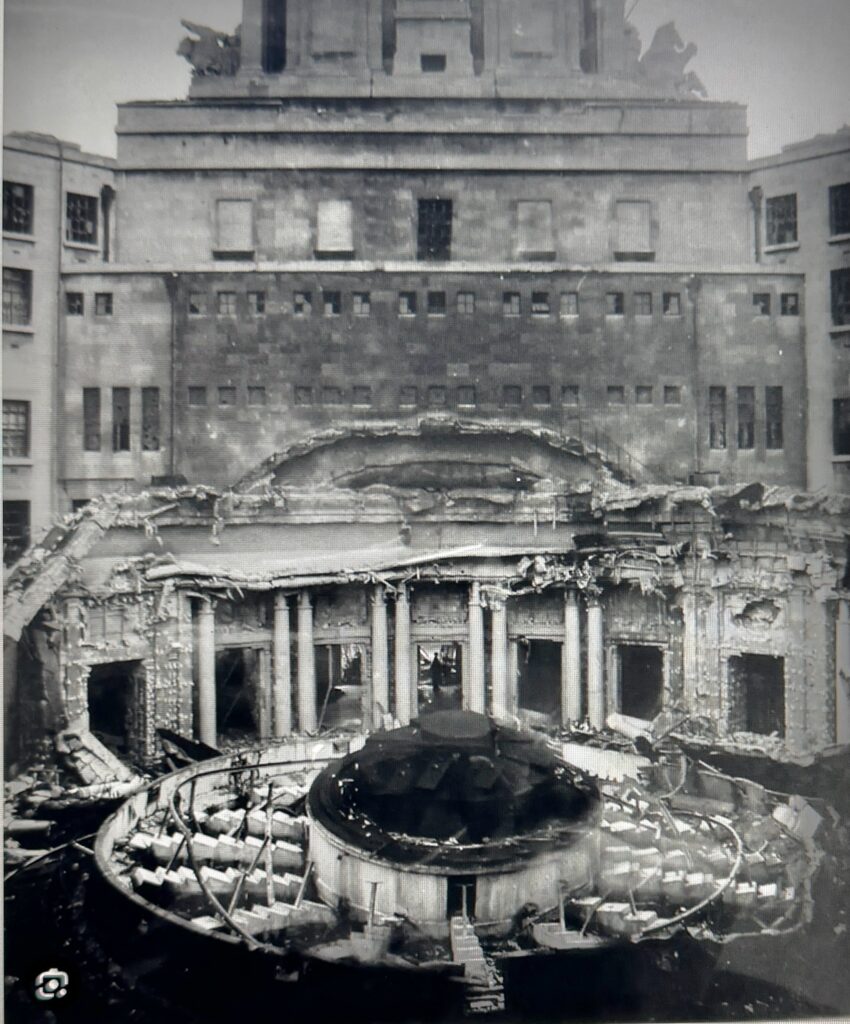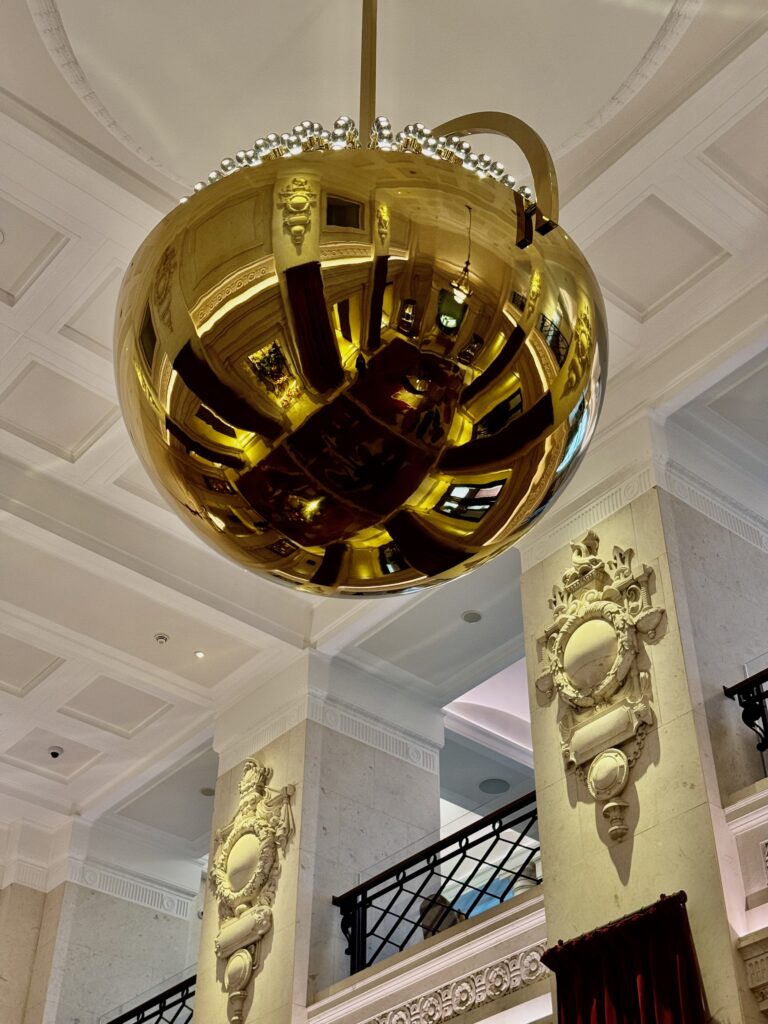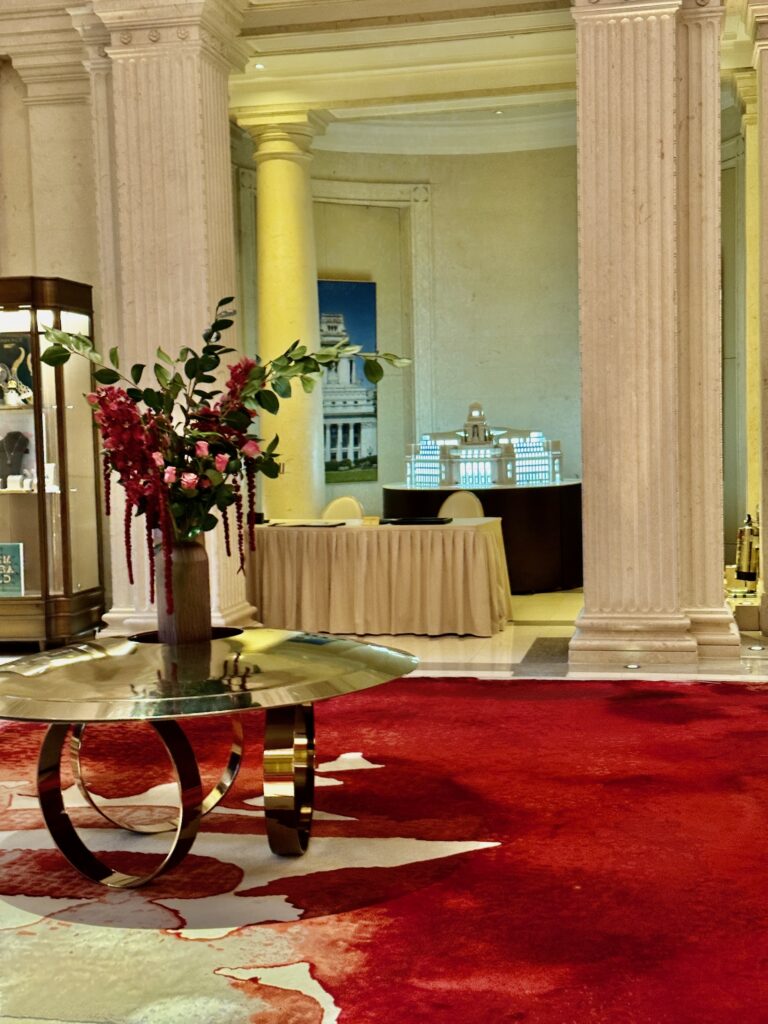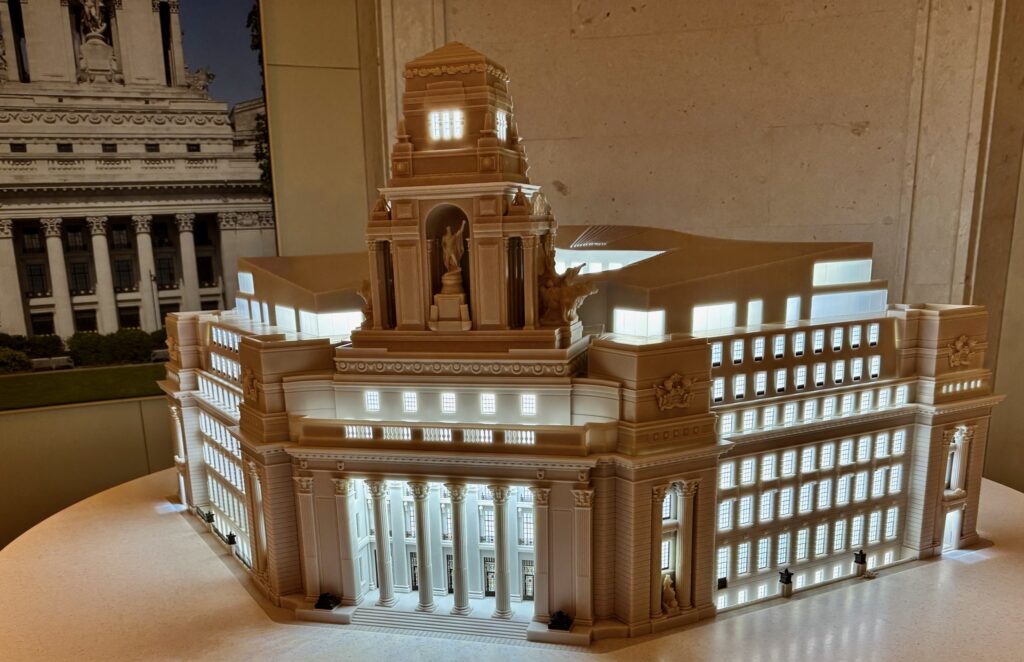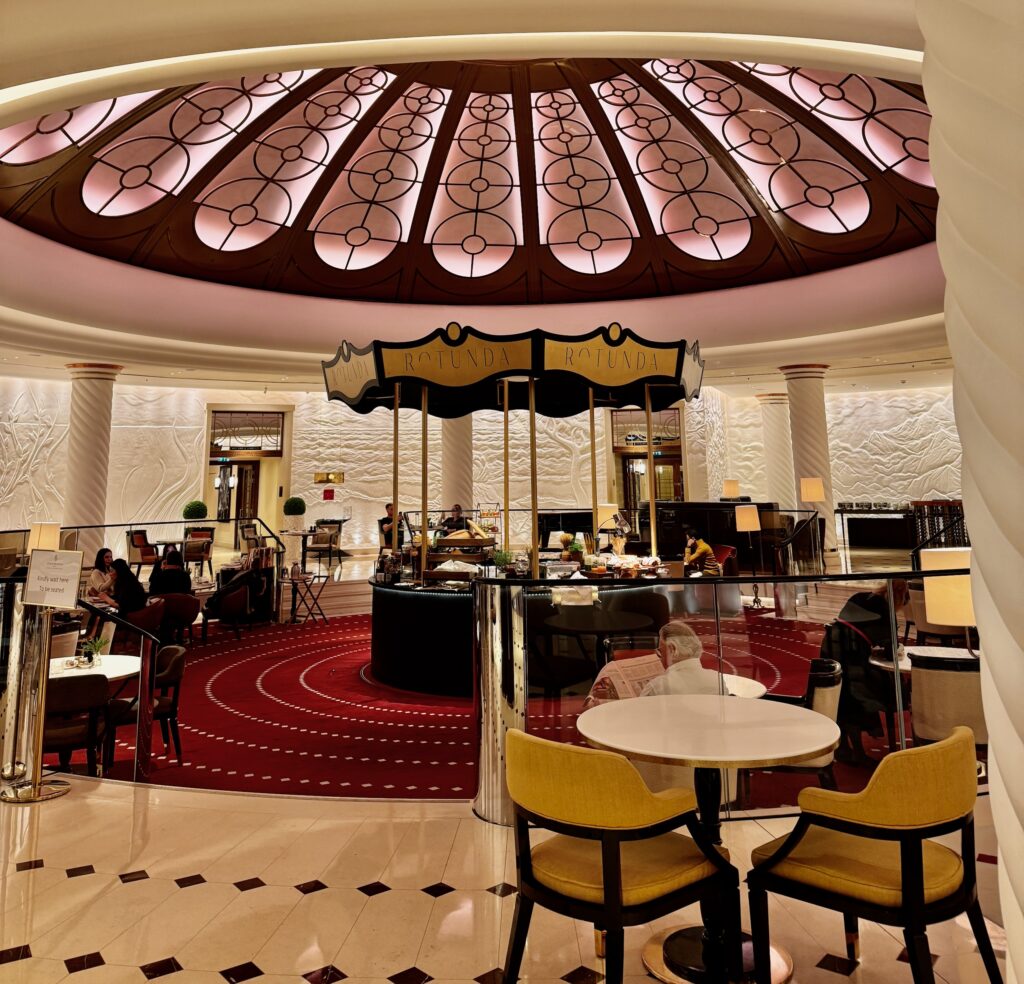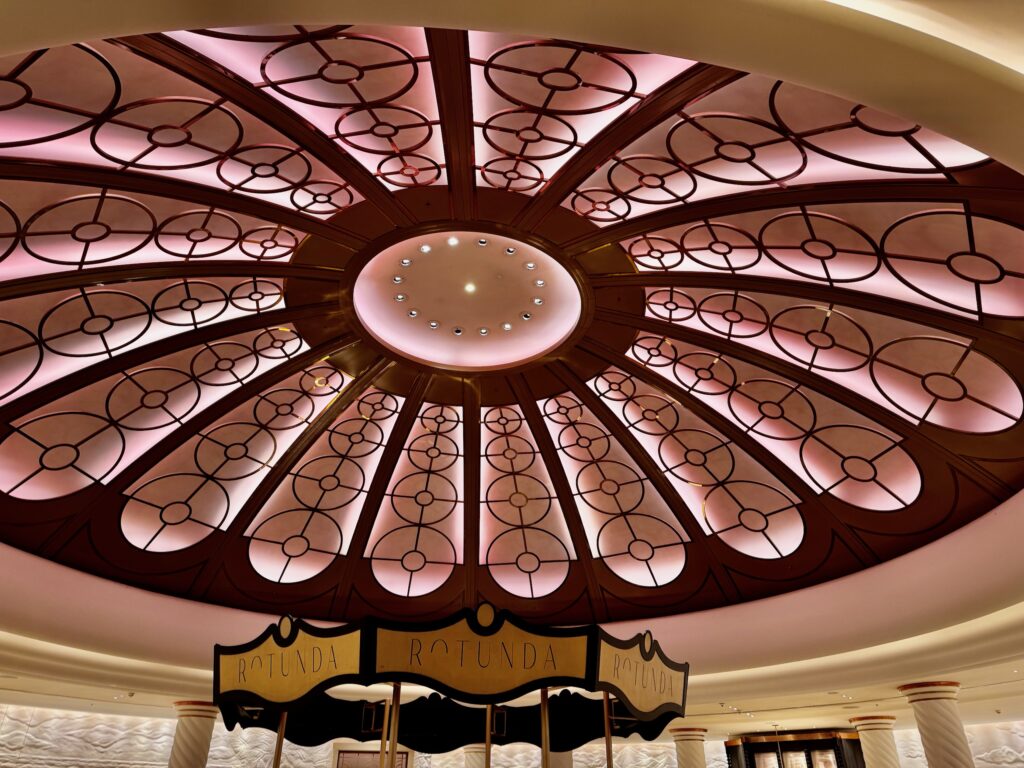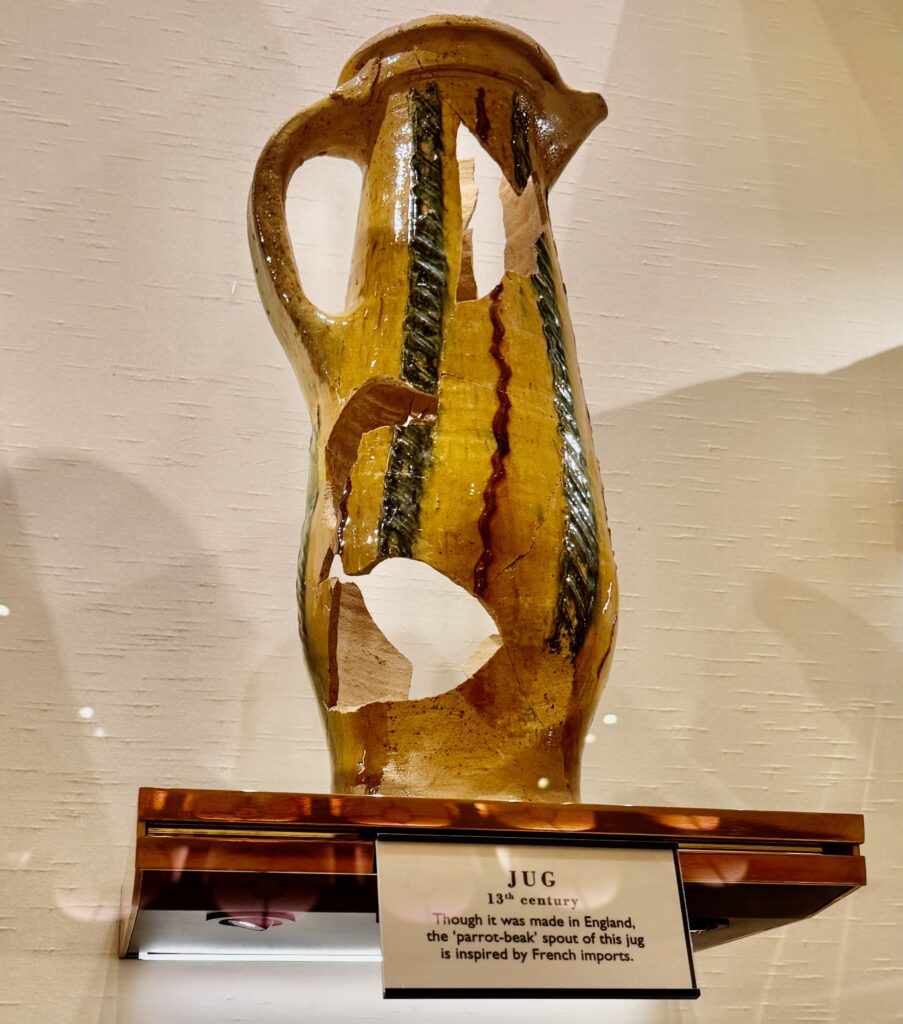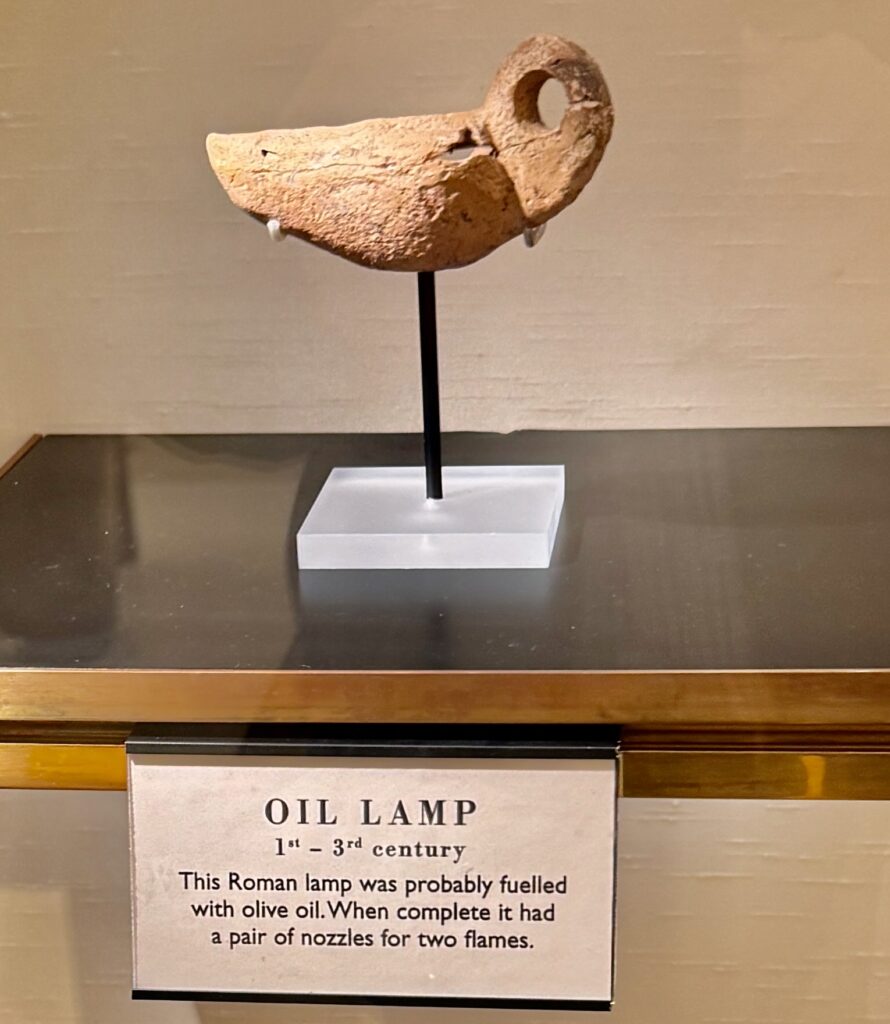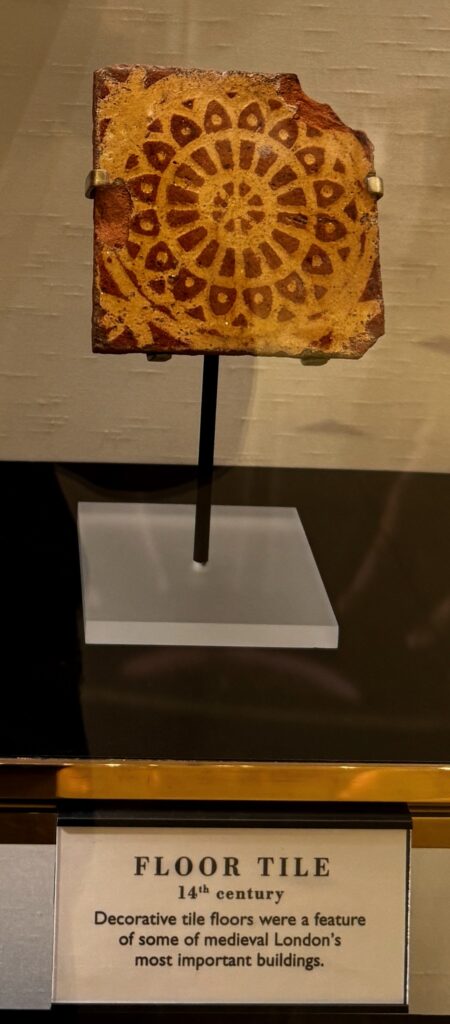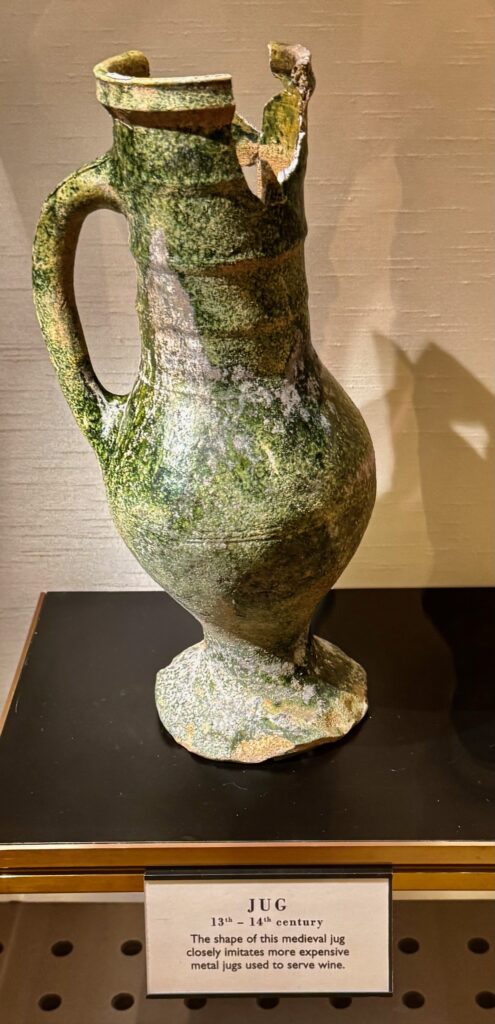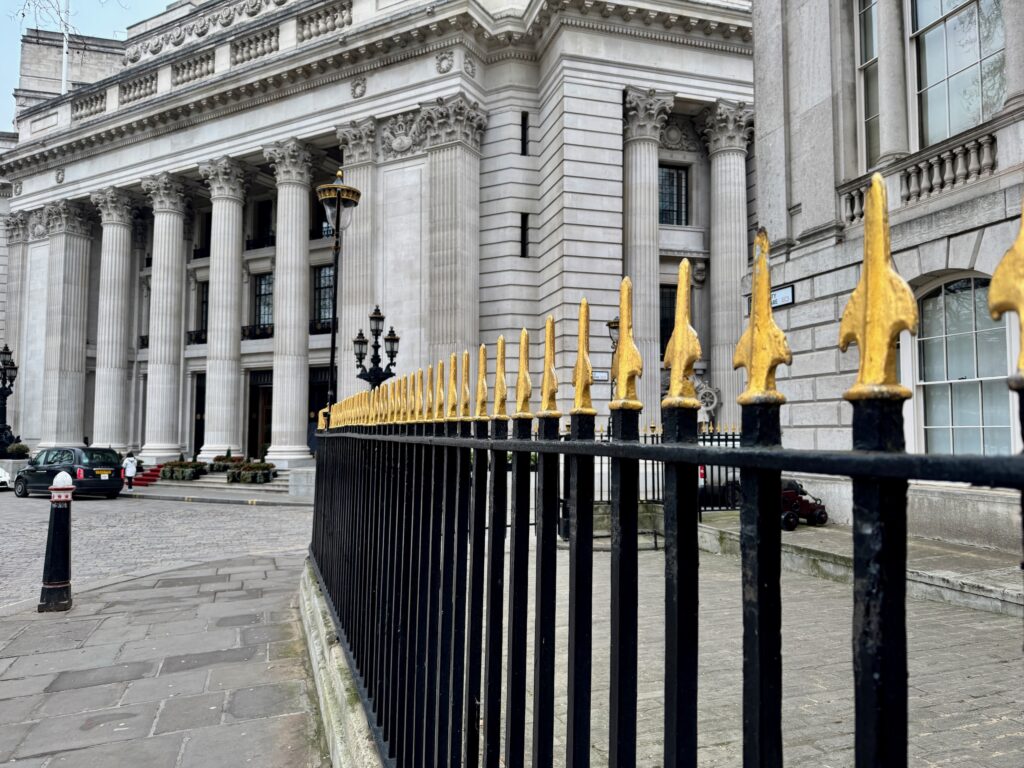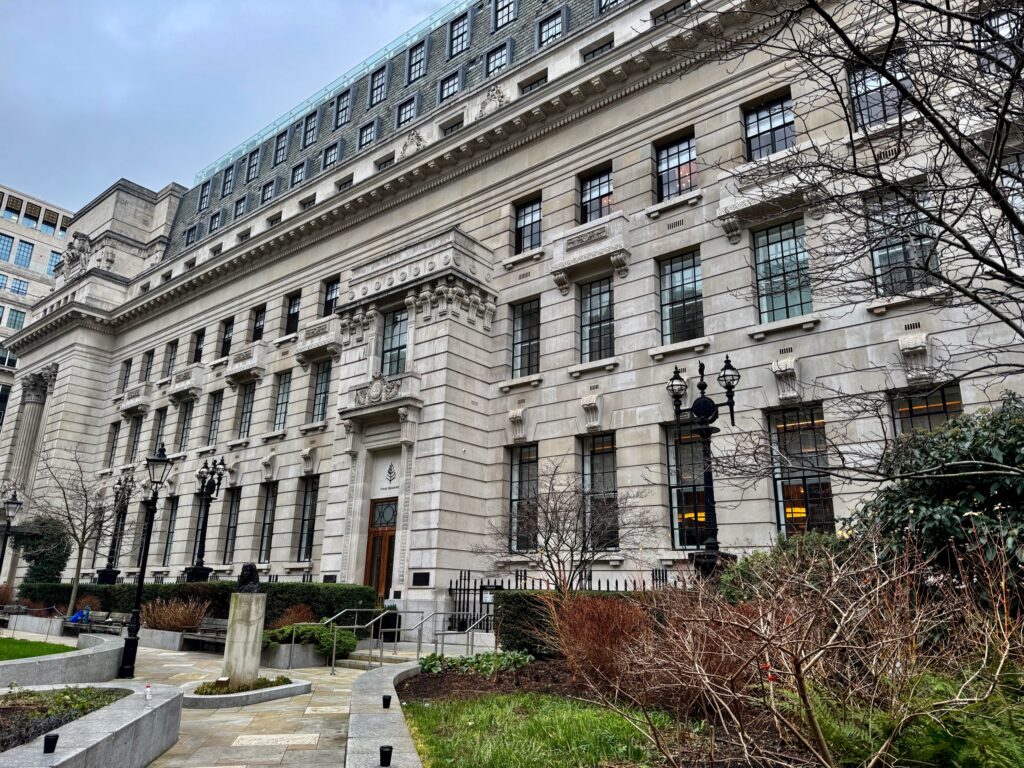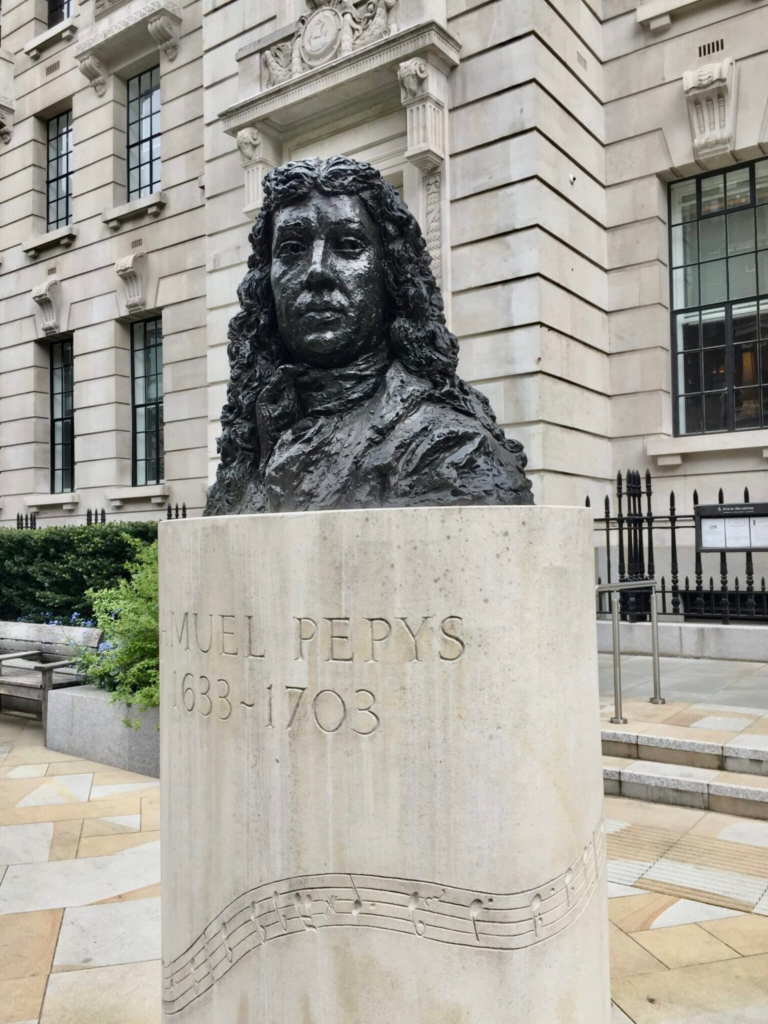I used to think the Cheapside frieze that I wrote about last week was the best example of terracotta carving in the City, but that was before I came across Cutlers’ Hall.
It can be found at 4 Warwick Lane (EC4M 7BR). Their earliest hall was built in 1638 but was lost in the Great Fire and then rebuilt twice; in 1725 and the 1832. The third and current hall dates from 1884, designed by Samuel Worth and Benjamin Broomhead Taylor who agreed to work together after the Company couldn’t choose between their respective proposals.
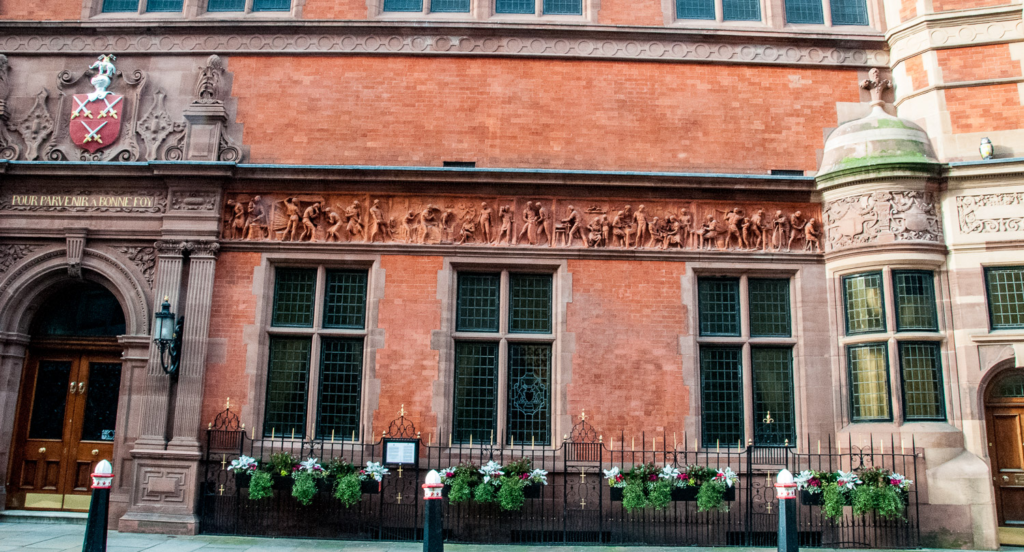
The coat of arms of the Cutlers’ Livery Company is – perhaps surprisingly – the elephant and castle. The exact reason for of the choice of an elephant has disappeared in the mist of time, but is presumed to relate to the ivory used to make knife and sword handles. Of old, the cutlers were responsible for producing metal items with a sharp edge, the emphasis shifting over time from implements used in warfare to those for domestic use. The arms were granted to the Company in 1476, although the elephant and castle did not come in until 1622 …
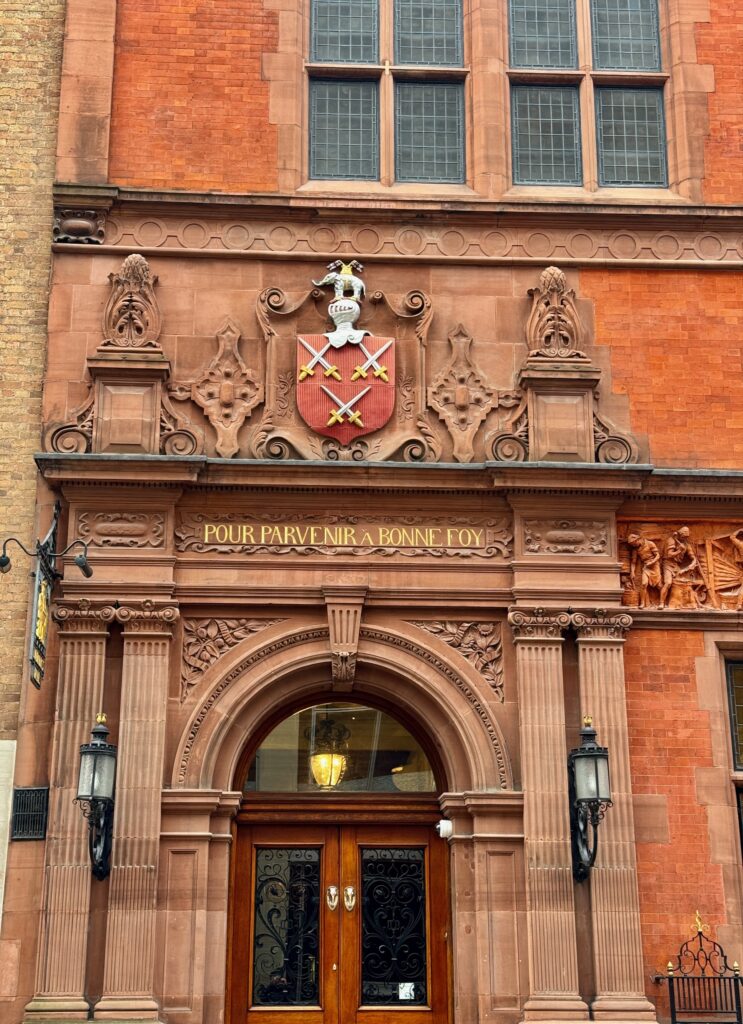
The Cutlers’ Company French motto – To Succeed through good faith …
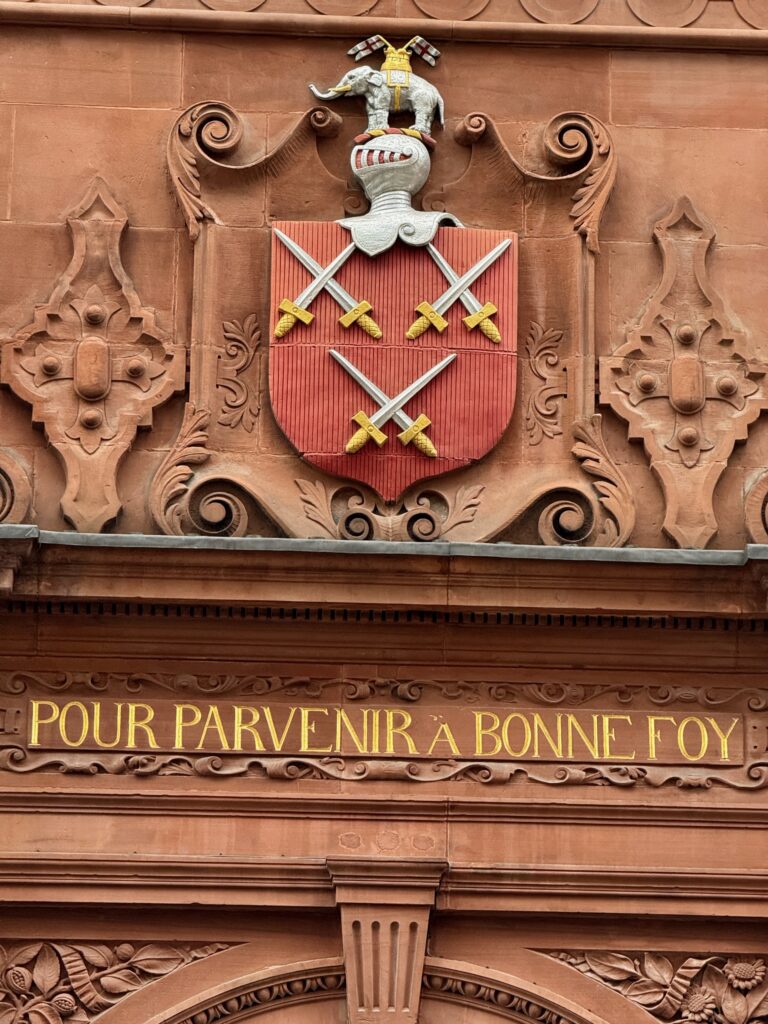
I love the door handles …
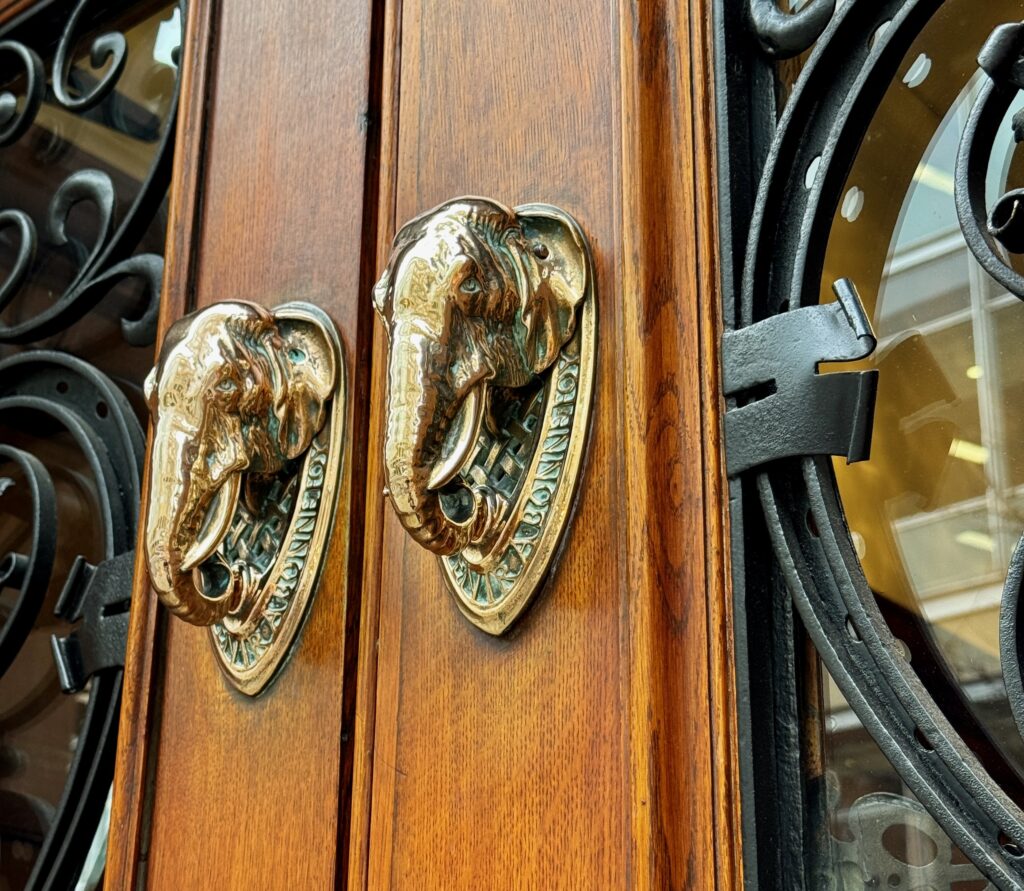
The magnificent terracotta frieze on the Hall façade, showing cutlers at work, is by the sculptor Benjamin Creswick (1853-1946). Creswick had been a pupil of John Ruskin and was a cutler himself from Sheffield. After he had had to leave the trade because of ill-health, he became interested in sculpture. The frieze (containing 33 figures) was made by E. Goodall & Co of Manchester …


It consists of four panels showing the four main facets of the cutlers’ craft: forging, grinding, hafting (preparing and fitting knife handles) and finishing. Let’s take a look at them in more detail.
Panel 1: Forging …
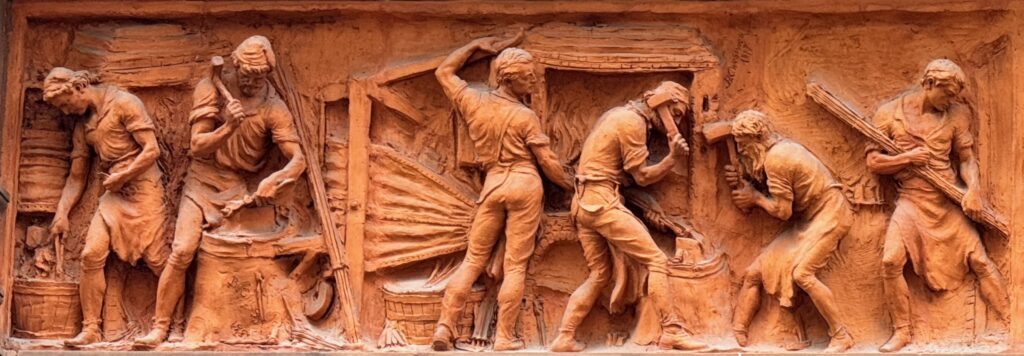
Left to right: plunging hot scissors into the hardening trough; forging scissors; heating the iron and hardening table knives at the bellows; the maker or ‘smith’ and the ‘striker’ (both with hammers) forging table knives; bringing a bundle of steel into the smithy.
Panel 2: Grinding …

Left to right: carrying a box of finished knife blades; a seated old man polishing or ‘buffing’ blades; glazing the blades and checking the stone marks have gone; hewing the grindstone; grinding the grindstone; setting blades before they are put on the grindstone, while a man holding a small grindstone remonstrates with him; an apprentice carrying a box of new work on his shoulder; two men carrying a large grindstone.
Panel 3: Hafting …
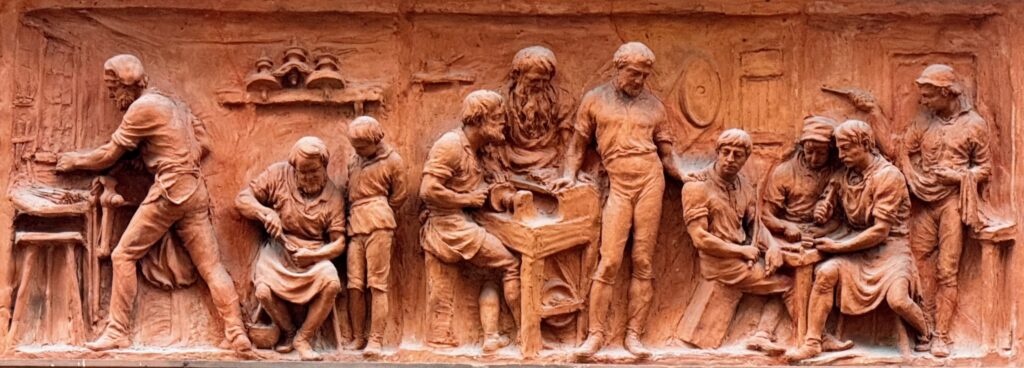
Left to right: filing a handle at the workbench; filling handles with compound as a young boy looks on, having brought his father’s dinner; a seated figure polishing a knife handle or ‘dollying’; a bearded man filing a handle; a standing man advising a seated apprentice drilling holes in handles; a seated youth scraping or ‘shaving’ knife handles with a piece of flat steel; a seated moustachioed man riveting handles; wiping off and checking the work.
Panel 4: Finishing …
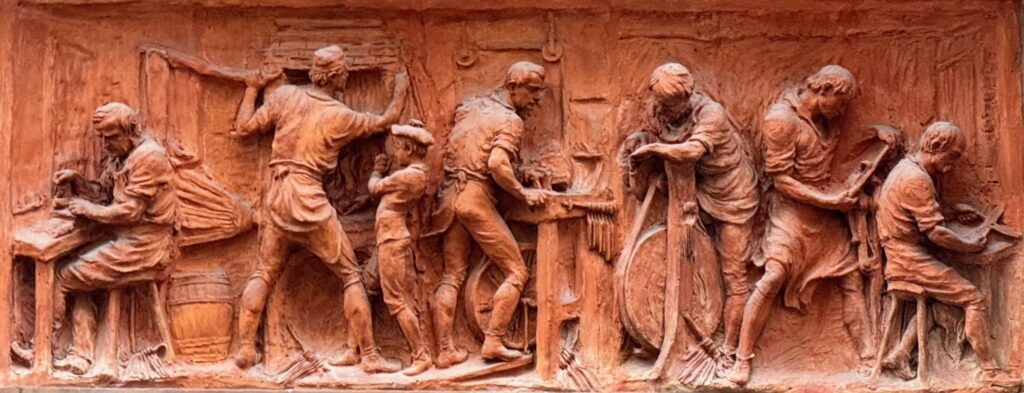
Left to right: grouping scissors into lots; a man reaching for tongs and blowing the bellows; a little boy poking the fire; boring the scissors on the foot-operated lathe; glazing the scissors; the scissor filer; finishing off and testing the scissors.
I’m indebted to the London on the Ground Walking Tours blog for the detailed description of the four stages.
I love the young boy absorbed by his father’s careful work …
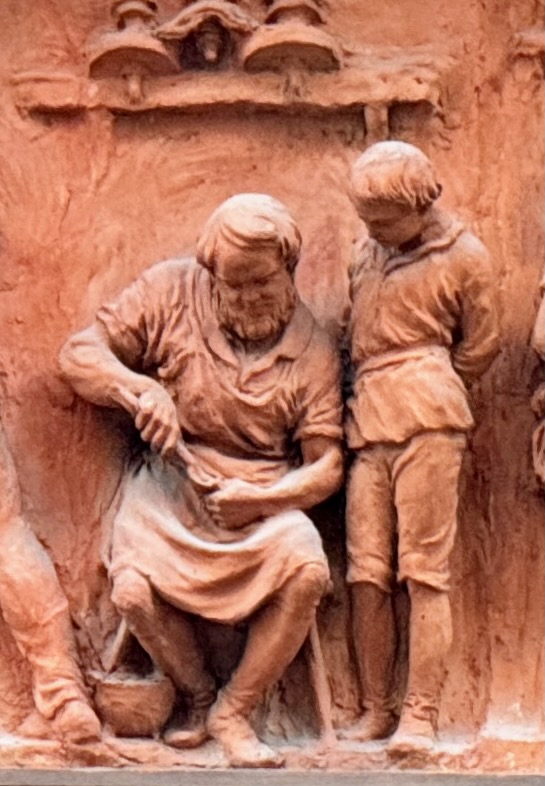
I had to smile when I noticed this plastic owl just above the terracotta on the right. He’s obviously intended to deter pigeons …
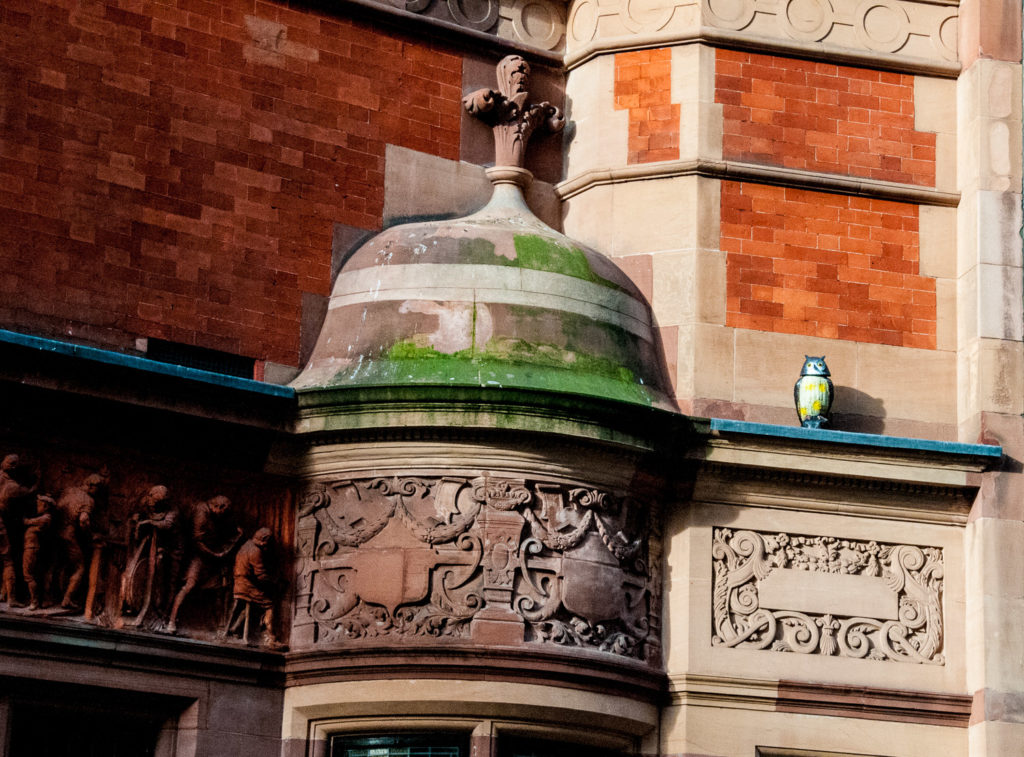
We are very lucky to be able to admire the hall today. A high explosive bomb destroyed the entire building next to it on the 10th May 1941, bringing down the hall’s North wall. The damage however was repaired and the hall brought back into use …


After visiting the hall, if you walk to the north west corner of Warwick Lane you will find an interesting bas-relief plaque. You can read about it, and the nearby mysterious Panyer Boy, in my blog from March 2018.
Trivia fact: Queen Anne was born exactly 360 years ago today, on 6th February 1665. Read more about her in my blog Queen Anne – tales of tragedy, love and vandalism.
If you would like to follow me on Instagram here is the link …


